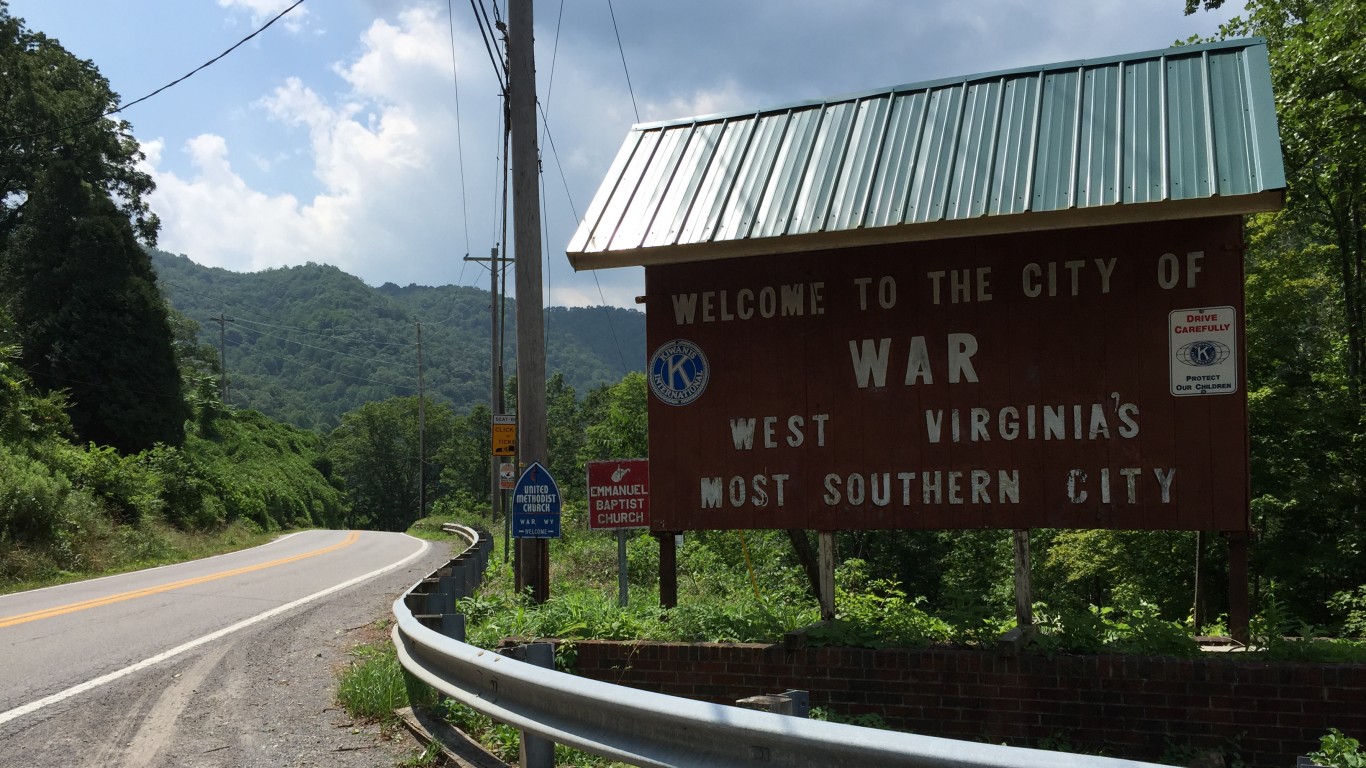
Have you ever wondered if you lived in a town whose name no one could ever get wrong because no other city has the same name? The chances of that are fairly good, considering that more than 15,500 places in the United States have unique names.
Some of these names are quite ordinary. For example, the city of Alamo Heights, Texas. No other area in the country shares the exact same name, but it’s self-explanatory, at least once you know it’s surrounded by San Antonio, where the Alamo is located. Similarly, the history of the name of Orange Beach, Alabama, is also somewhat predictable. It comes from the orange groves that were abundant in the area in the 19th century.
Names of other communities, however, are not so clear-cut. The origins of the names Truth or Consequence or Cut and Shoot, which also happen to be cities in the Lone Star State, have a more complicated, and rather amusing, history.
Cities are often named after a person who made a significant impact on the region or country as a whole. Sometimes, the idea behind a community’s name is to distinguish it from others and may therefore represent a geographic feature. Towns also sometimes change their names, either because they have grown too much or they do it as a publicity stunt.
Click here for the 50 of the least common town names in the US.
In order to identify 50 of the least common town names in America, 24/7 Wall St. reviewed the nearly 30,000 names of cities, towns, villages, boroughs, and CDPs (census-designated places — settled but unincorporated population centers as defined by the U.S. Census Bureau), collected by the 2017 U.S. American Community Survey. The list contains names that are unique to only one place in the United States. To narrow our list further, we looked at names that consist of three or more words. We also looked at names with three or fewer characters and as well 20 or more because both would likely be considered rare. Then we looked at town and place names that are distinct words — such as pie or gun — and are not expected to be used as town names. The following list is a selection of names that are both among the least common and unconventional.
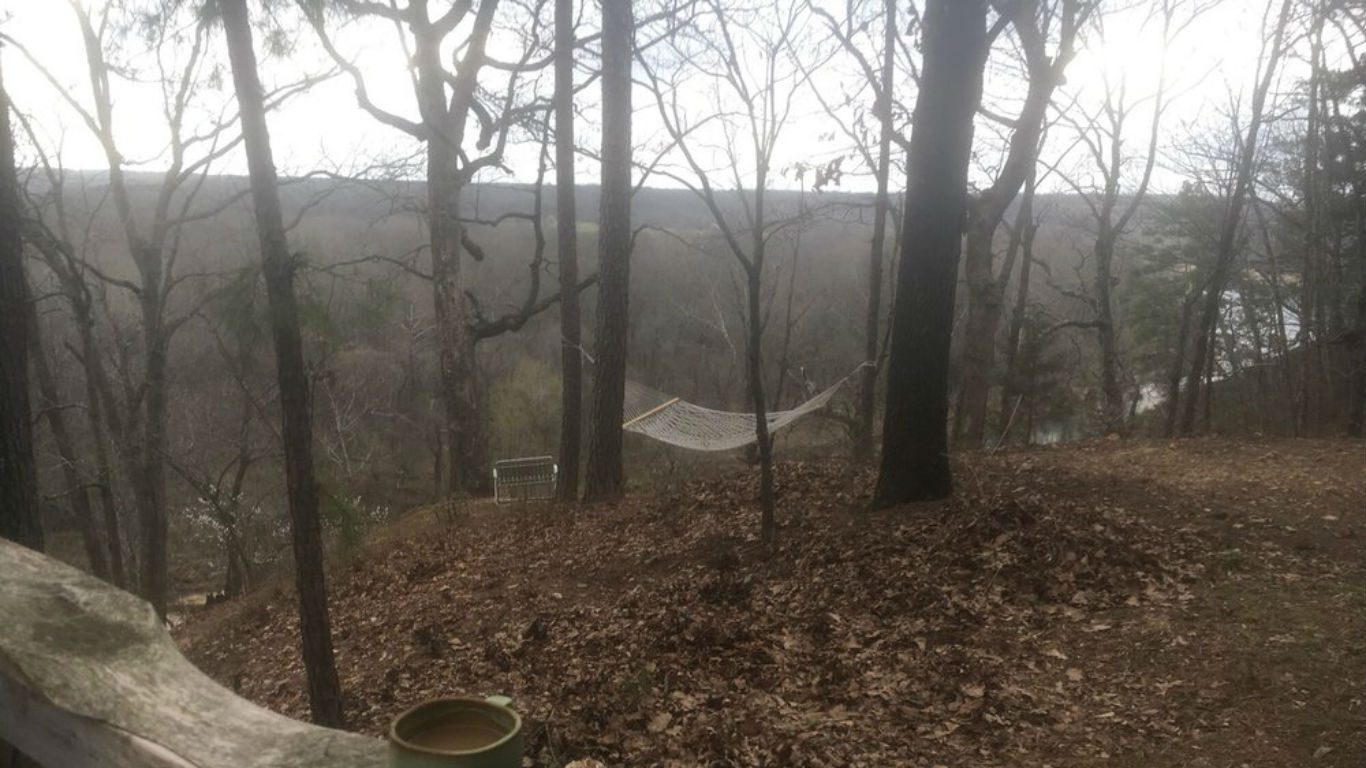
1. Box, Oklahoma
> 2017 Population: 130
> Municipal status: Census-designated place
Box, un unincorporated community, used to go by the slightly less original name Roy. The name was changed to Box when the area got a post office in 1911. The new name was inspired by former slave Henry “Box” Brown, who had escaped to freedom in a box.
[in-text-ad]
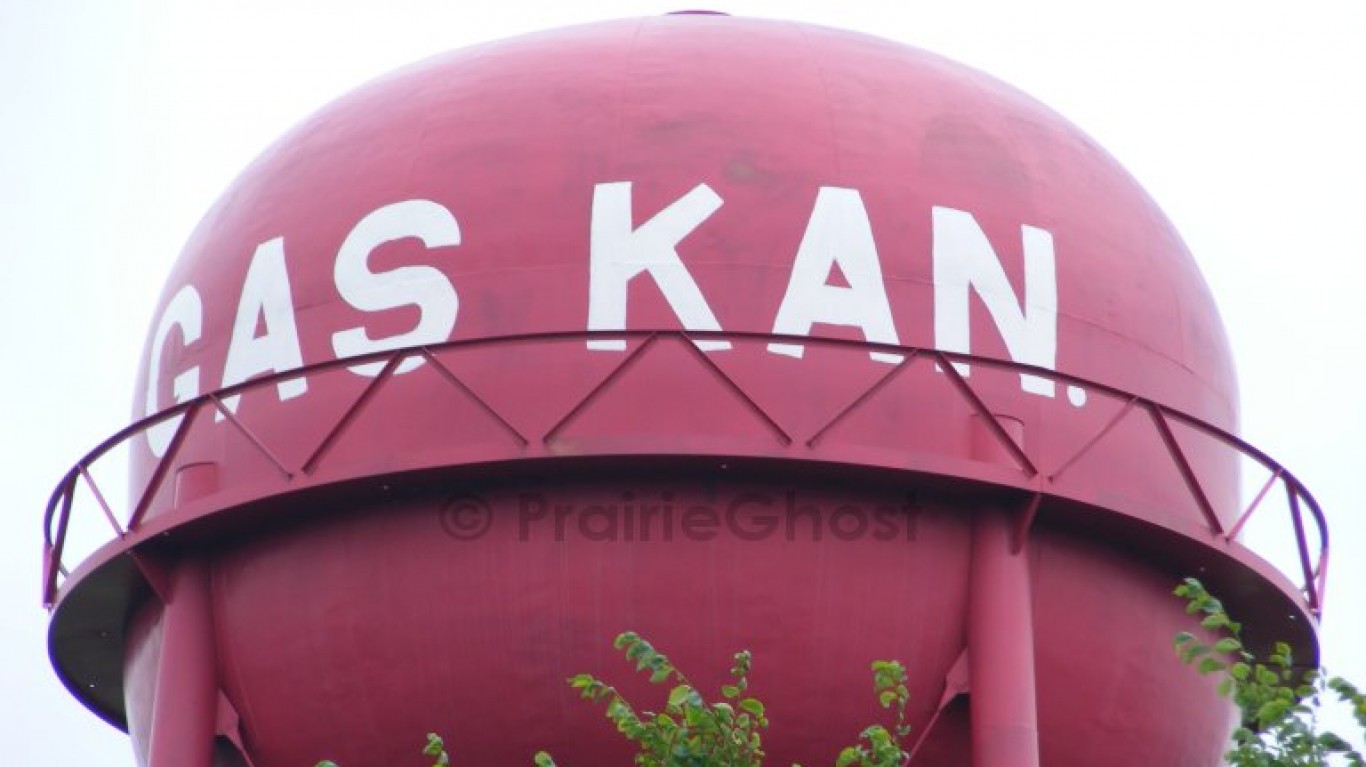
2. Gas, Kansas
> 2017 Population: 609
> Municipal status: City
In 1893, drillers discovered natural gas deposits in the area. The place was quickly dubbed Gas City, and officially became just Gas when the city got its first post office.

3. IXL, Oklahoma
> 2017 Population: 61
> Municipal status: Town
According to the town website and the Oklahoma Historical Society, there are many theories as to the meaning of I.X.L. (or simply IXL). Some people think it’s an onomatopoeic boast suggesting “I excel.” Others believe it to be a Roman numeral (though the letters are in the wrong order for that). The town’s website ends up deciding that because the town was built on a piece of former Cherokee land its initials signify Indian Exchange Land. The Oklahoma Historical Society, however, points out that the surrounding towns were at that time predominately African American, and adds, without further explanation, that “IXL was the name used to describe a dispersed African American community.”

4. War, West Virginia
> 2017 Population: 738
> Municipal status: City
War takes its name from War Creek, which was named by local Native Americans for a battle that apparently occurred near the creek’s headwaters in 1788. Formerly called Miner’s City, War was incorporated under that name in 1920.
[in-text-ad-2]
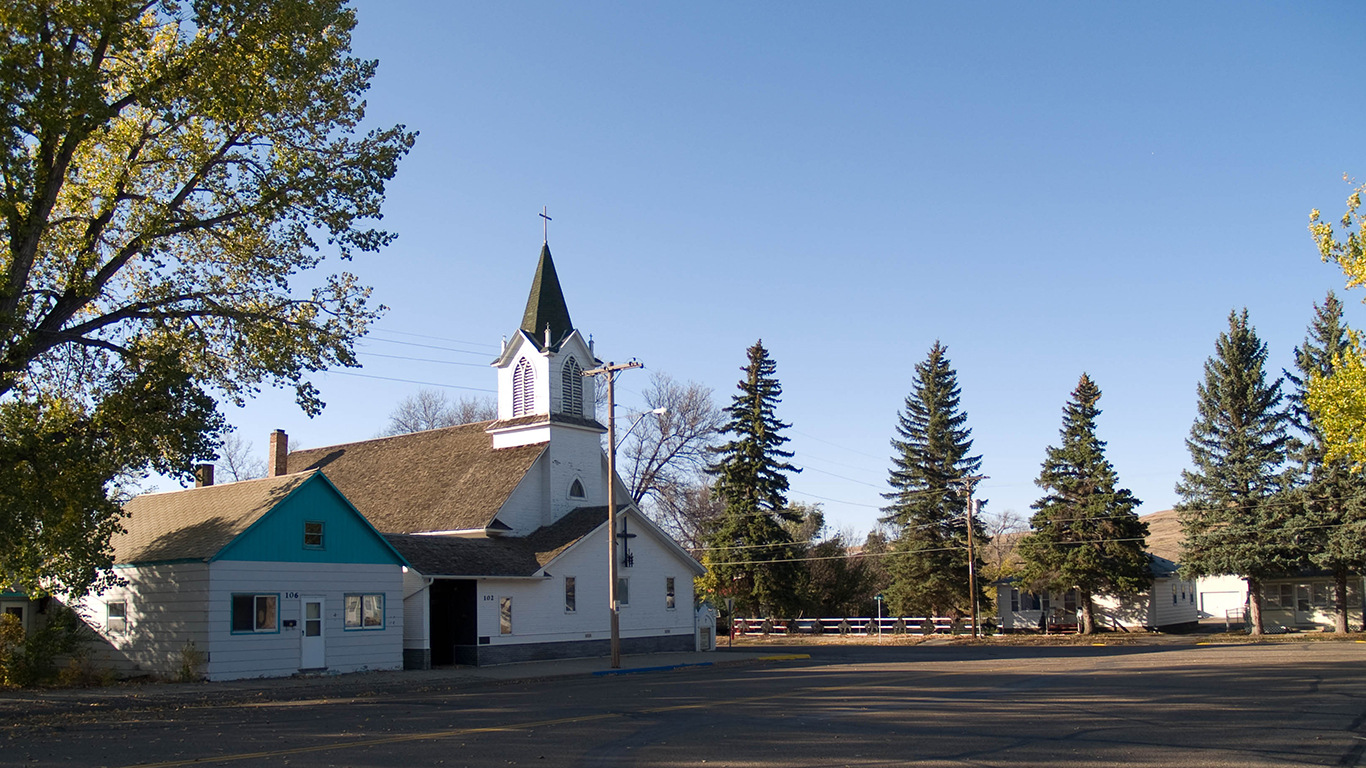
5. Zap, North Dakota
> 2017 Population: 228
> Municipal status: City
One version of the history of the city’s name is accepted as true. The city had a coal mine at the edge of town, and the official in charge of naming new areas at the time knew of a town with coal mines in Scotland that was named Zapp. So it only made sense to him to name the city with the same name, dropping the one “p” as a way of Americanizing it.
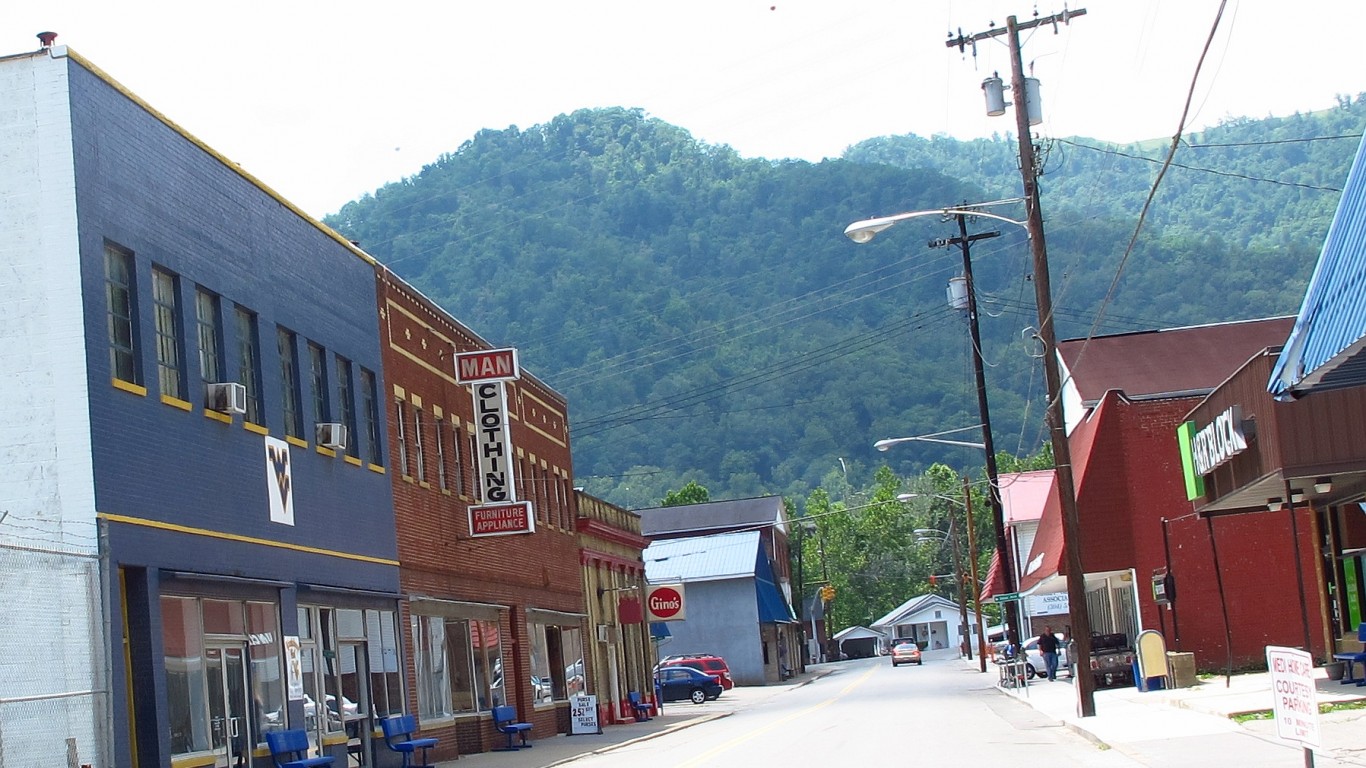
6. Man, West Virginia
> 2017 Population: 903
> Municipal status: Town
The name of the town comes from last syllable of the Ulysses Hichman, at the time a respected member of the West Virginia House of Delegates from Logan County, where the town is located. Hichman (which is sometimes spelled Hinchman) also was one of the first doctors in the area and the country’s census taker.
[in-text-ad]
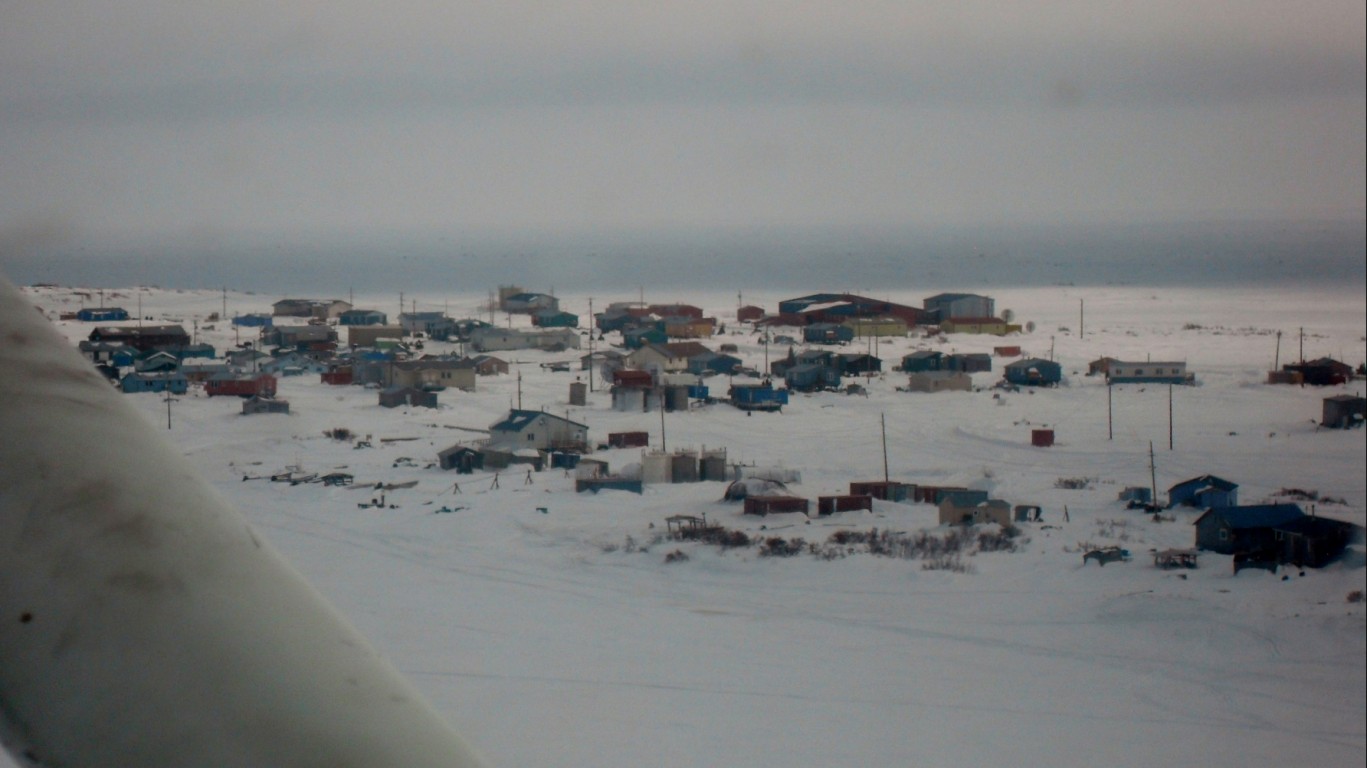
7. Eek, Alaska
> 2017 Population: 474
> Municipal status: City
Eek’s name may remind of the sound a frightened person makes, but it’s actually an anglicized corruption of the locality’s Central Yup’ik name, Ekvicuaq — literally “little cliff.” Another theory for the name’s origin is that it came from the Eskimo word for “two eyes.”
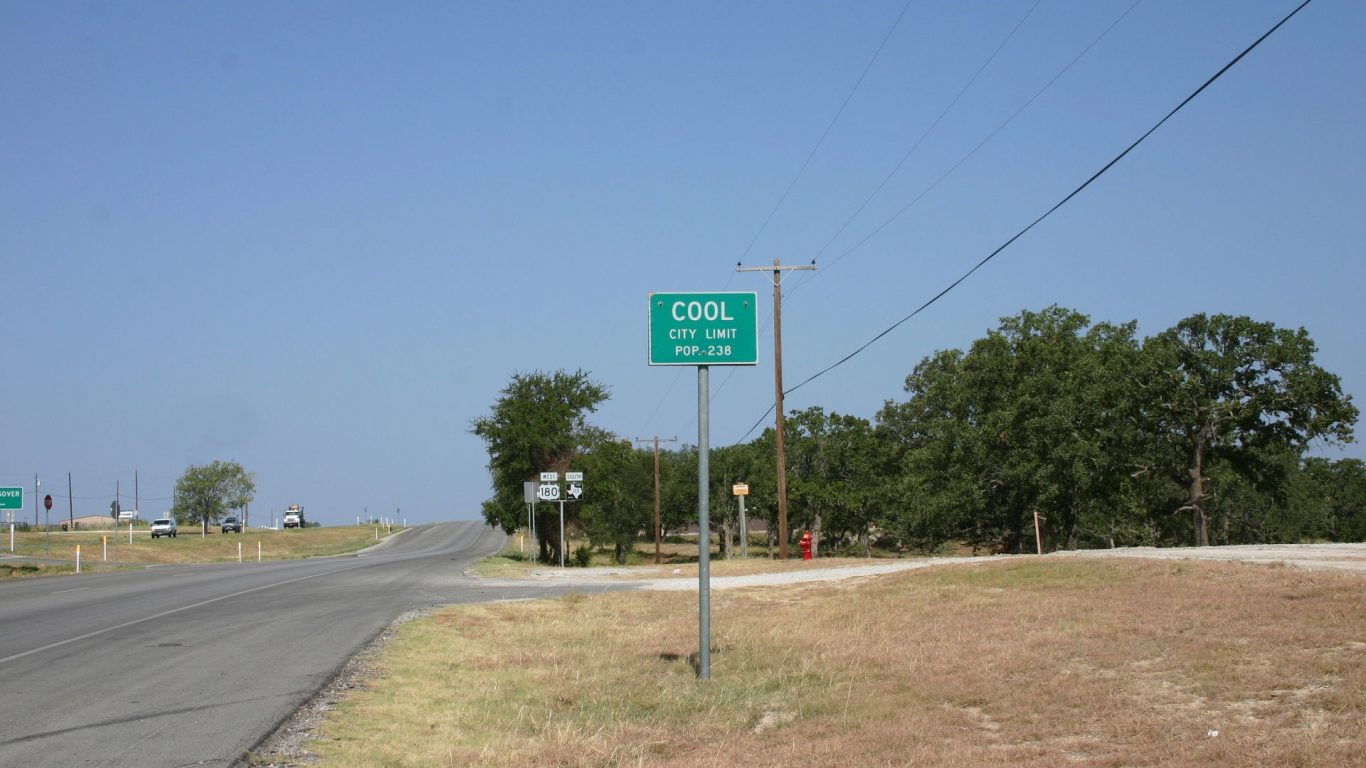
8. Cool, Texas
> 2017 Population: 243
> Municipal status: City
A more appropriate name of this town may have been Humid. The city’s climate is characterized by high temperatures and rain throughout the year. Summers are especially hot — even nights are warm — and moist.
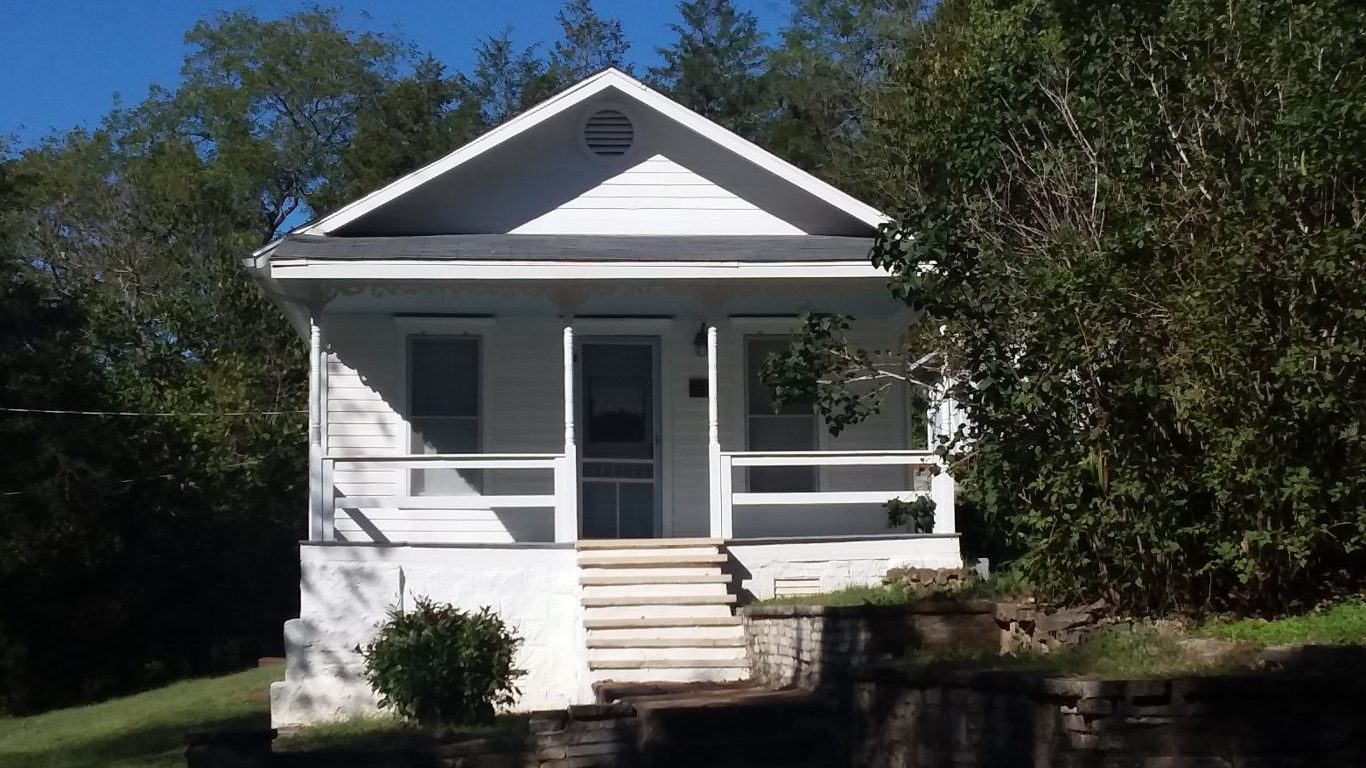
9. Zinc, Arkansas
> 2017 Population: 68
> Municipal status: Town
No mystery here. This small town in Boone County got its name because of the abundance of zinc and lead, which were first discovered in the area in the 1890s.
[in-text-ad-2]
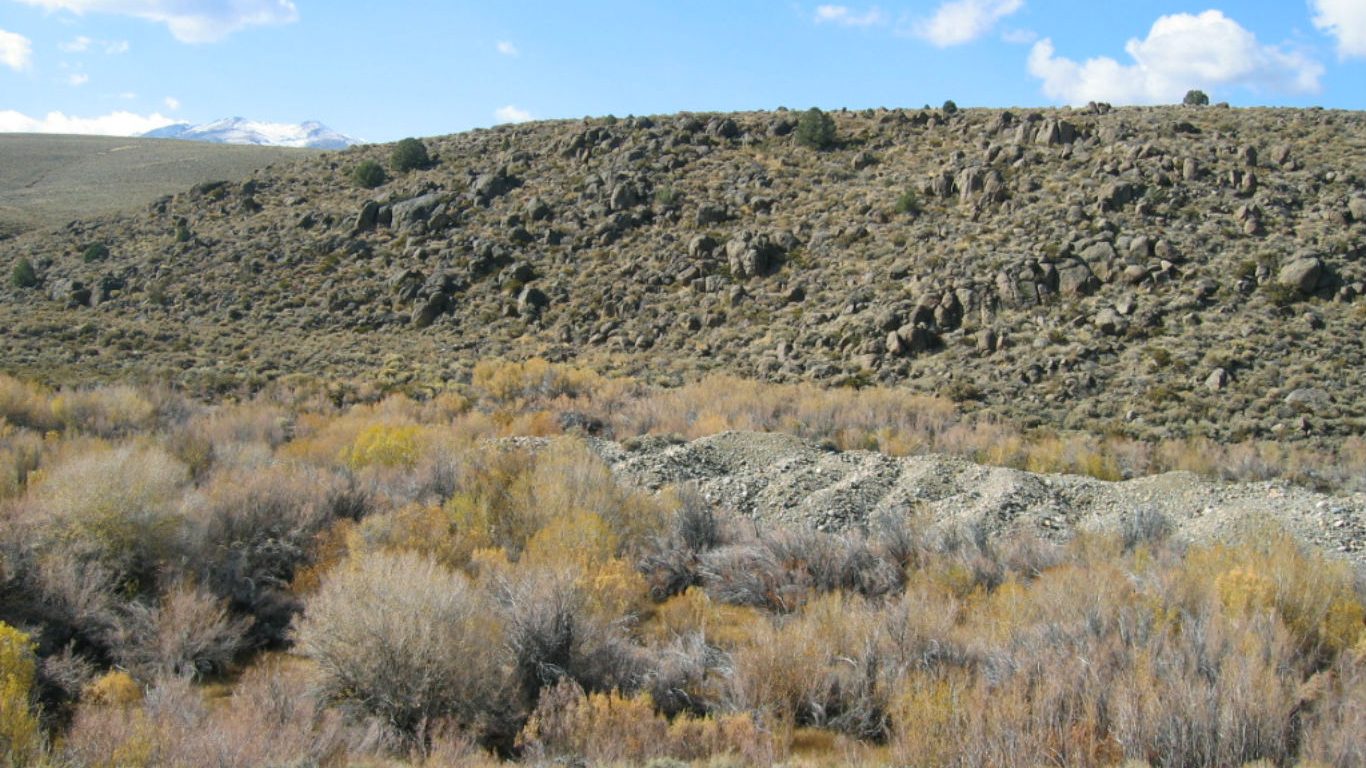
10. Dogtown, California
> 2017 Population: 2,548
> Municipal status: Census-designated place
You may find it on occasion spelled Dog Town. In the mid-1800s, the area became the first of the gold rush sites east of the Sierra Nevada mountains. Those who came to explore the area’s riches settled in a camp, calling the place Dog Town — a popular miner’s term for camps made of huts or hovels.
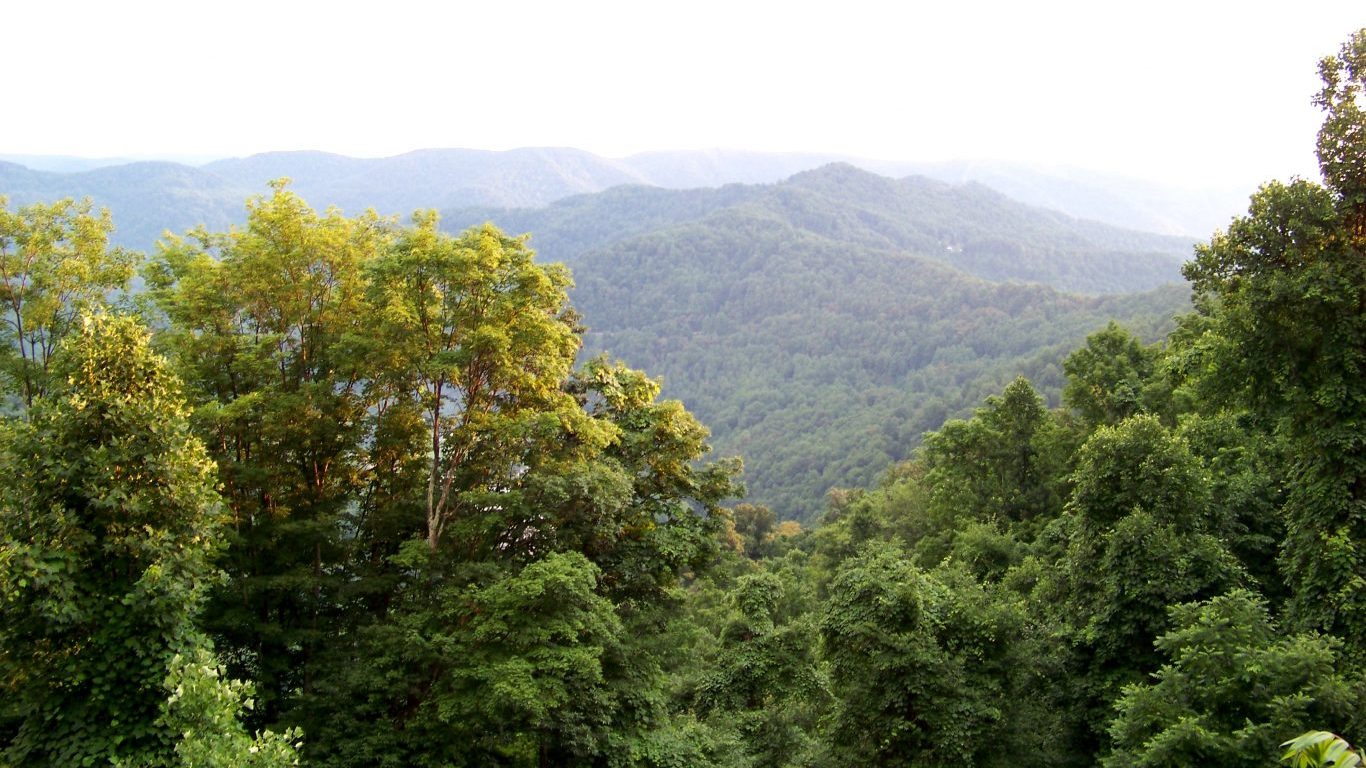
11. Bergoo, West Virginia
> 2017 Population: 36
> Municipal status: Census-designated place
The community of Bergoo used to be called Leatherwood, which made sense because the place was a center of logging activity in its heyday. Bergoo is believed to be derived from the word burgoo, a type of Irish stew the loggers used to make.
[in-text-ad]
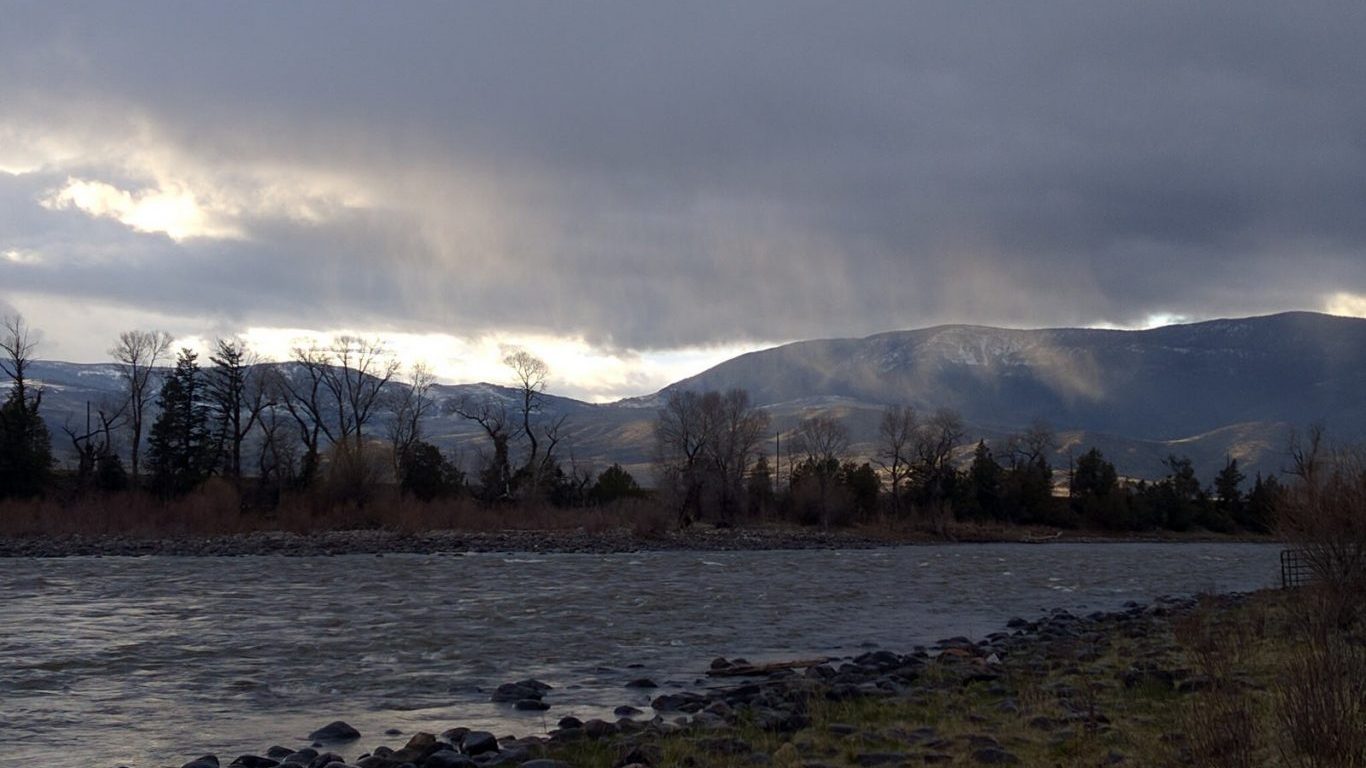
12. Wineglass, Montana
> 2017 Population: 352
> Municipal status: Census-designated place
The area got its name from its mountainous location. Some believe that when you look up, the mountain appears to be in the shape of a wine glass.
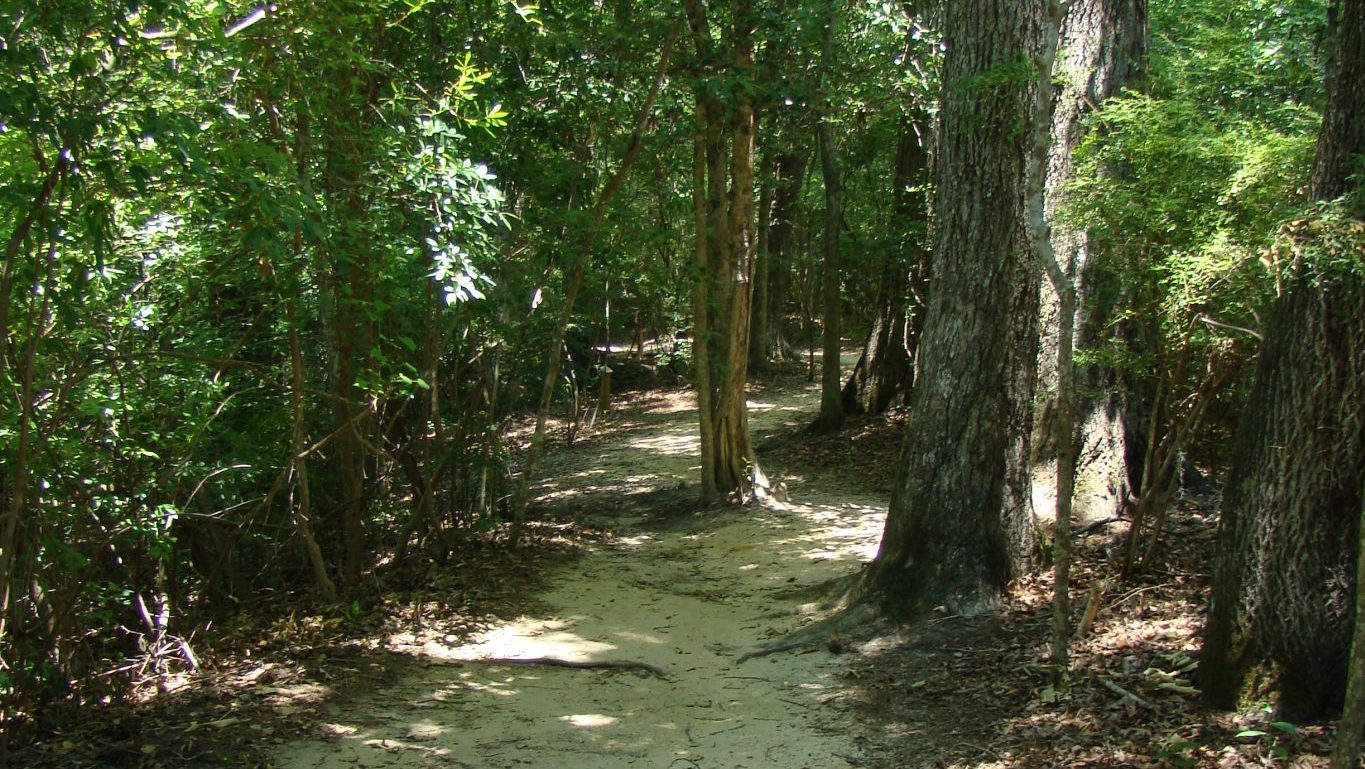
13. Coward, South Carolina
> 2017 Population: 760
> Municipal status: Town
It’s likely not easy for town residents to say where they’re from, and many amusing moments can ensue. The reality is more straightforward. The town was most likely named after the prominent Coward family, which lives in the county.
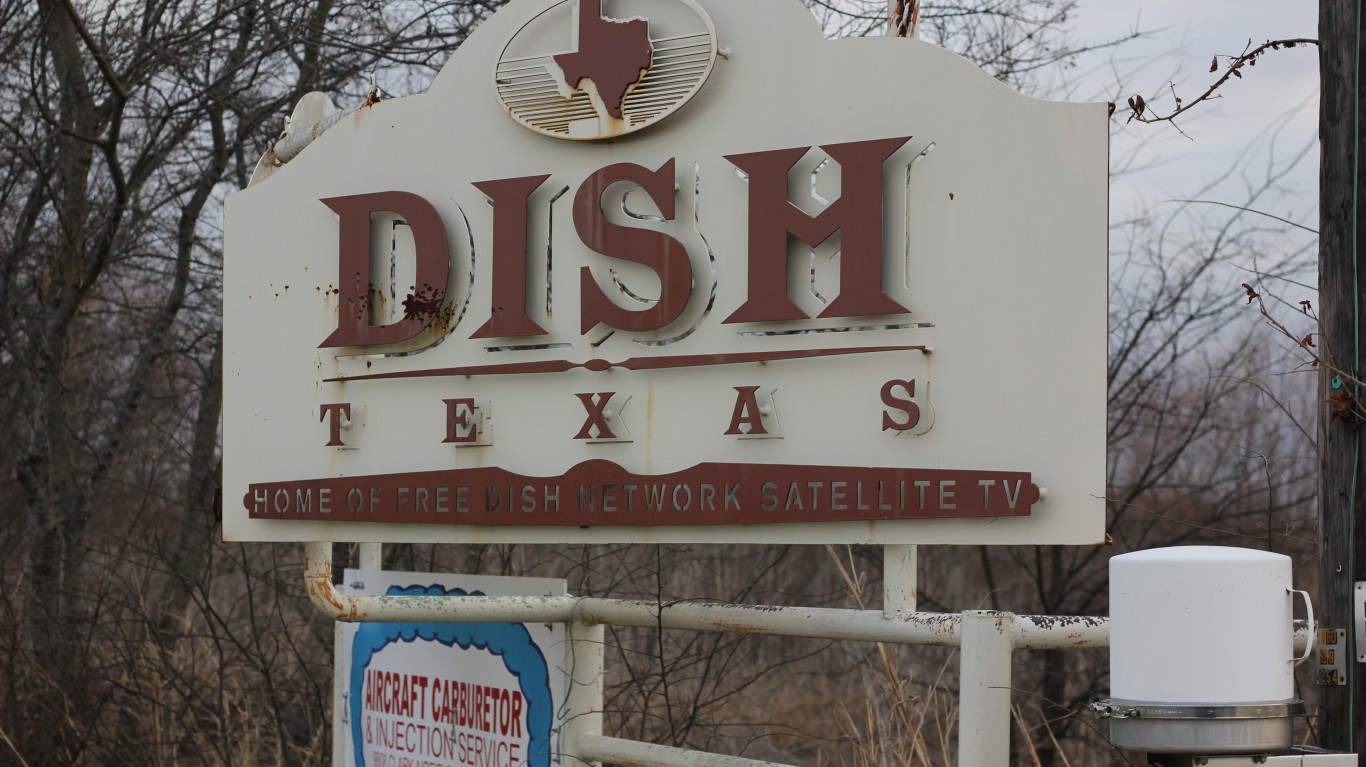
14. DISH, Texas
> 2017 Population: 418
> Municipal status: town
The town’s first name was Clark, but residents voted in 2005 to rename it for popularity as well as financial reasons. The new and current name comes from television provider Dish Network. Residents changed it as a publicity stunt to get free satellite service for a decade.
[in-text-ad-2]
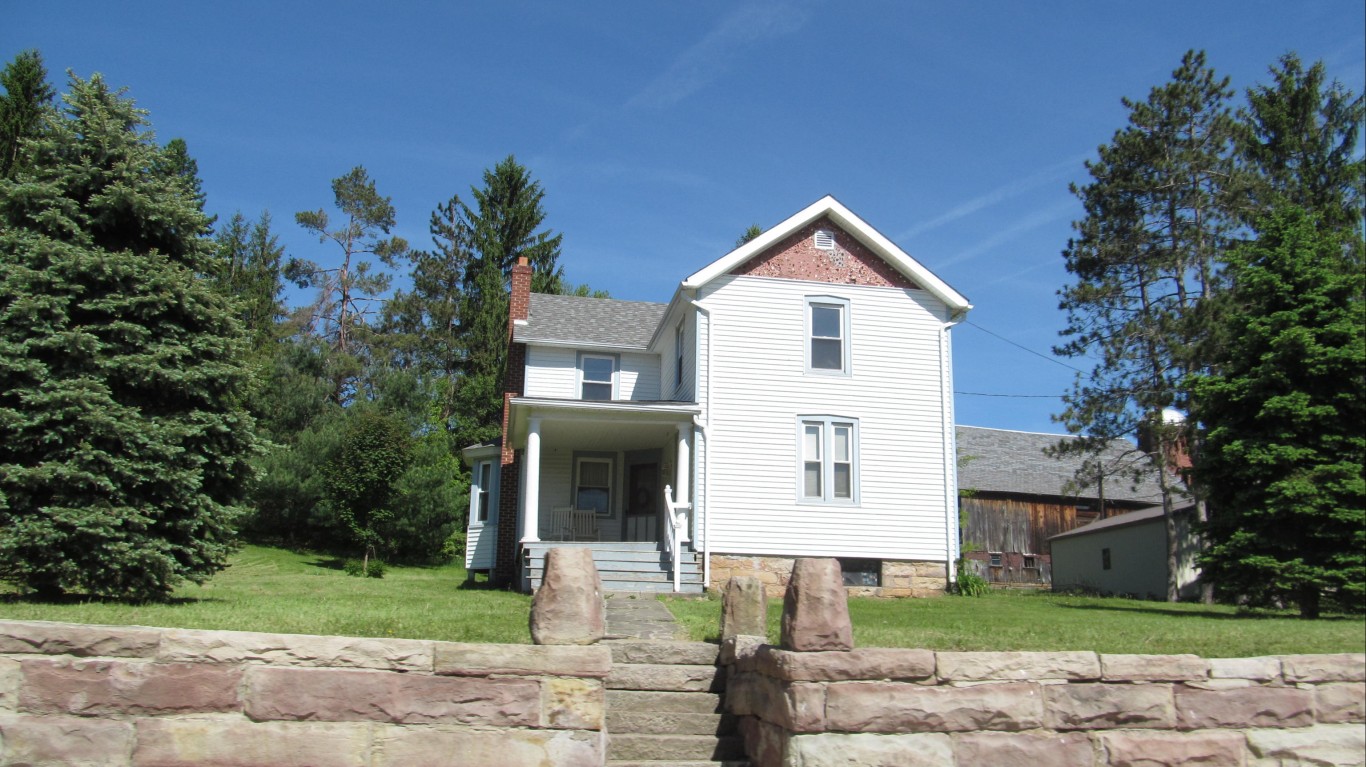
15. Accident, Maryland
> 2017 Population: 280
> Municipal status: Town
In 1751, when land speculator George Deakins, Jr., was granted the patent, or official land grant, to the tract where the town now stands, he called it “Accident.” According to local lore, this was because the two engineers Deakins sent to examine the best land in the 600 acres he was given had accidentally surveyed the same tract simultaneously.
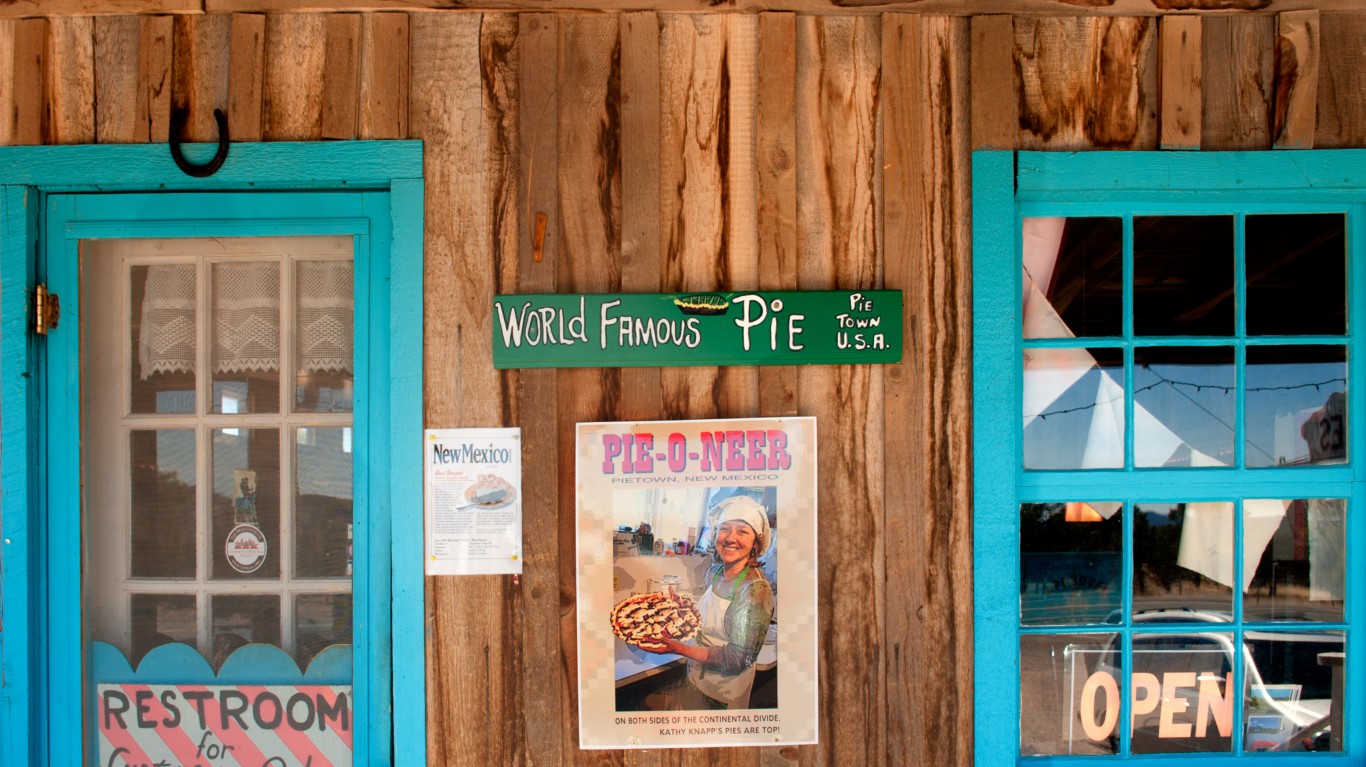
16. Pie Town, New Mexico
> 2017 Population: 66
> Municipal status: Census-designated place
Pie Town was named after a bakery that was known for making pies with dried apples. The community hosts a Pie Festival every September.
[in-text-ad]
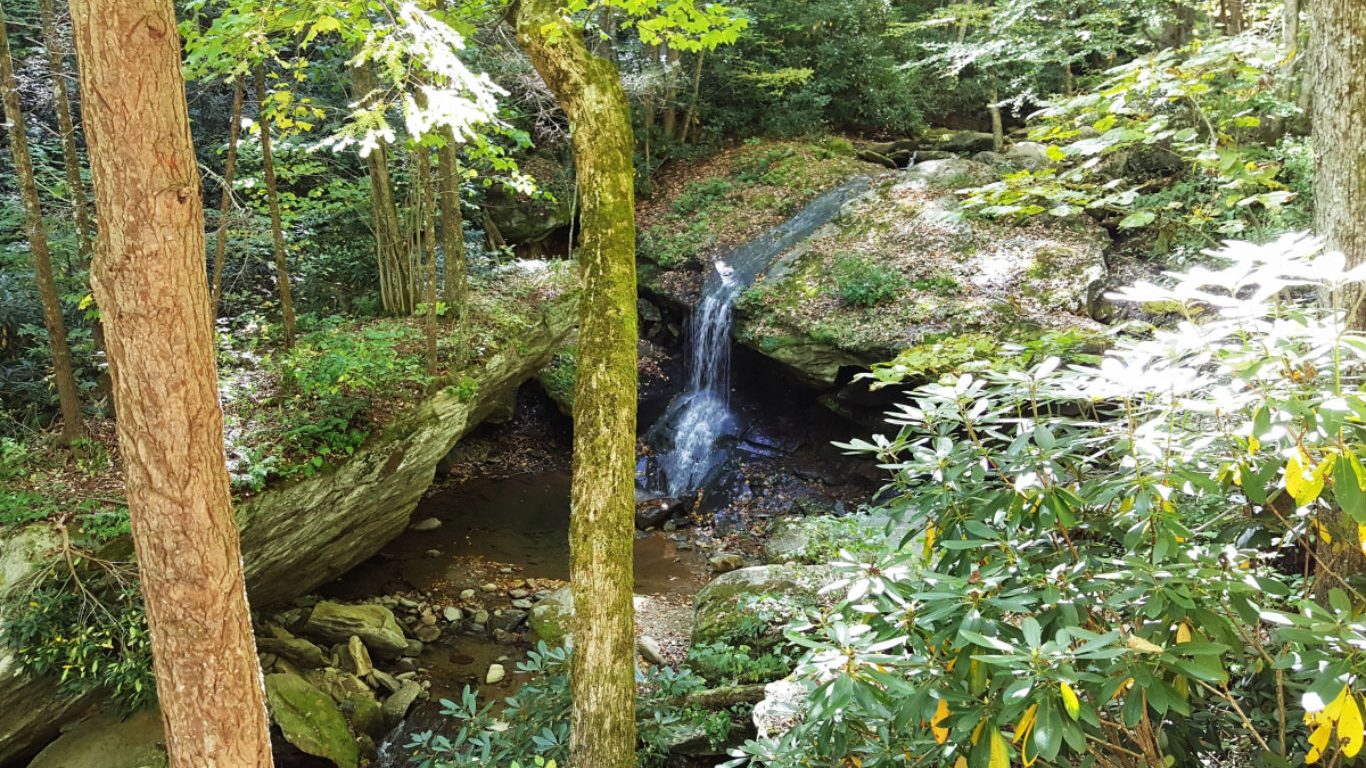
17. Seven Devils, North Carolina
> 2017 Population: 258
> Municipal status: Town
Incorporated in 1979, the town was named after, as one legend goes, seven brothers who had a reputation for being troublemakers. The version that’s more widely accepted, however, is that the town has got its name from the nearby seven rocky hills that early settlers found difficult to pass.
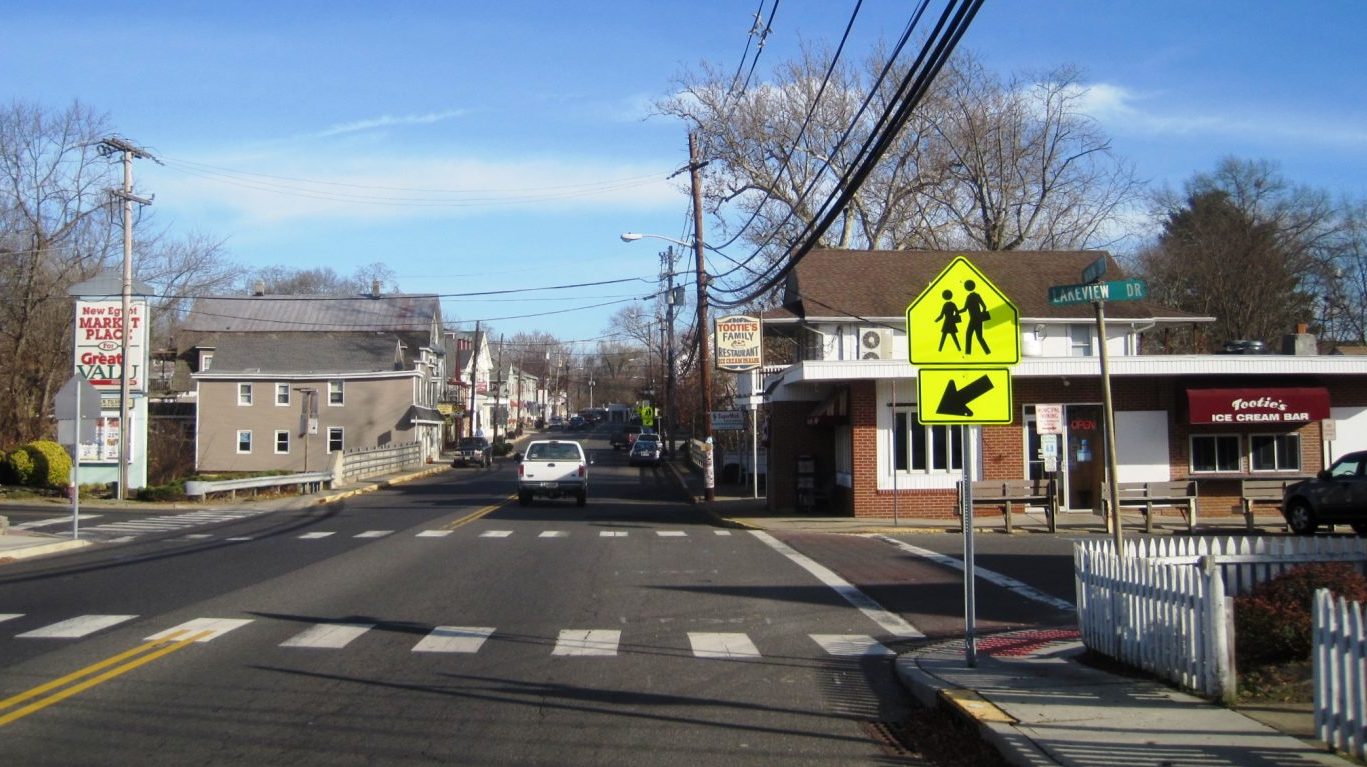
18. New Egypt, New Jersey
> 2017 Population: 2,421
> Municipal status: Census-designated place
New Egypt’s history goes back to colonial days, when settler Clement Plumstead was granted the land in 1699. It was simply called Egypt then. It’s not clear when the “New” was added. In 1845, it was incorporated as Plumstead Township. The name was officially changed to Oakford in 1869, and back to New Egypt a year later.
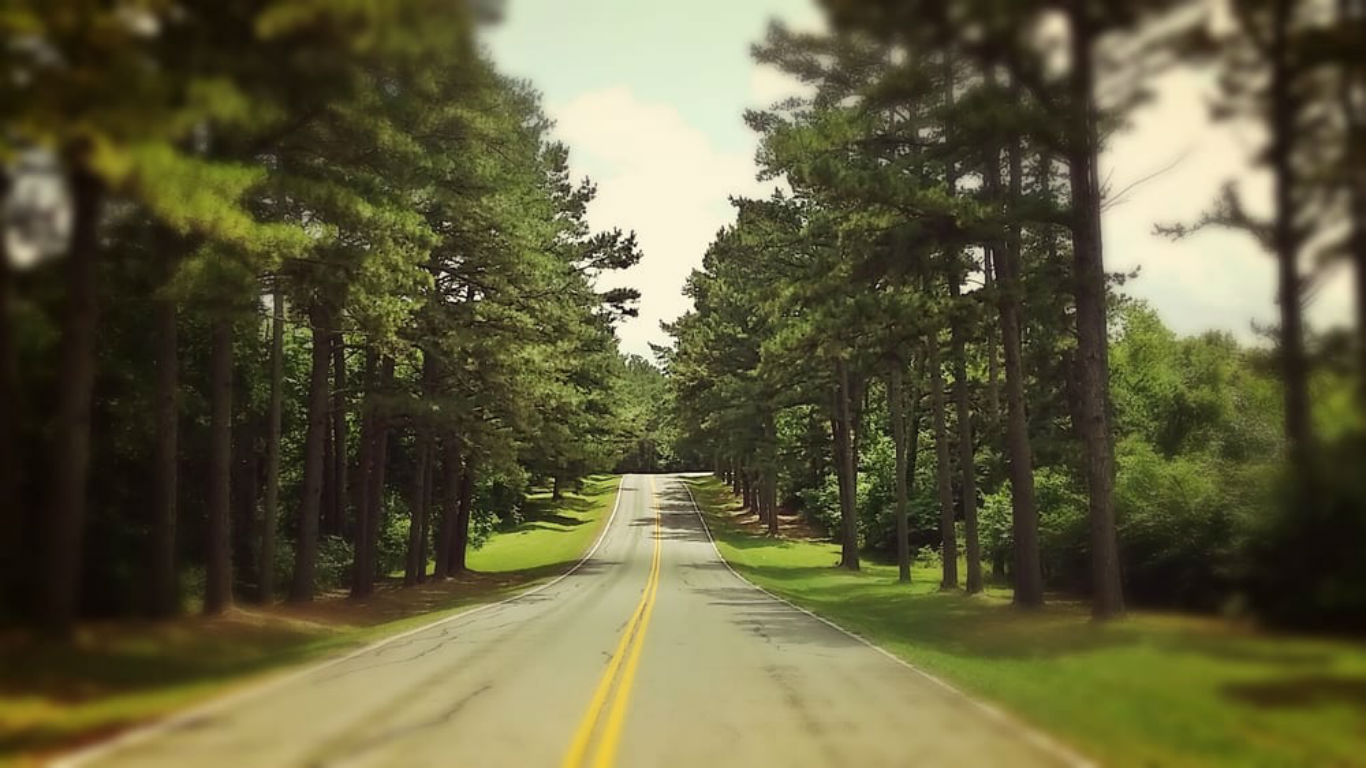
19. Lost City, Oklahoma
> 2017 Population: 962
> Municipal status: Census-designated place
The history of the community’s name has been spread by word of mouth. A tribe of Native Americans was camped on Fourteen Mile Creek, but they disappeared and no one knows how or what became of them. So people started calling the place Lost City.
[in-text-ad-2]
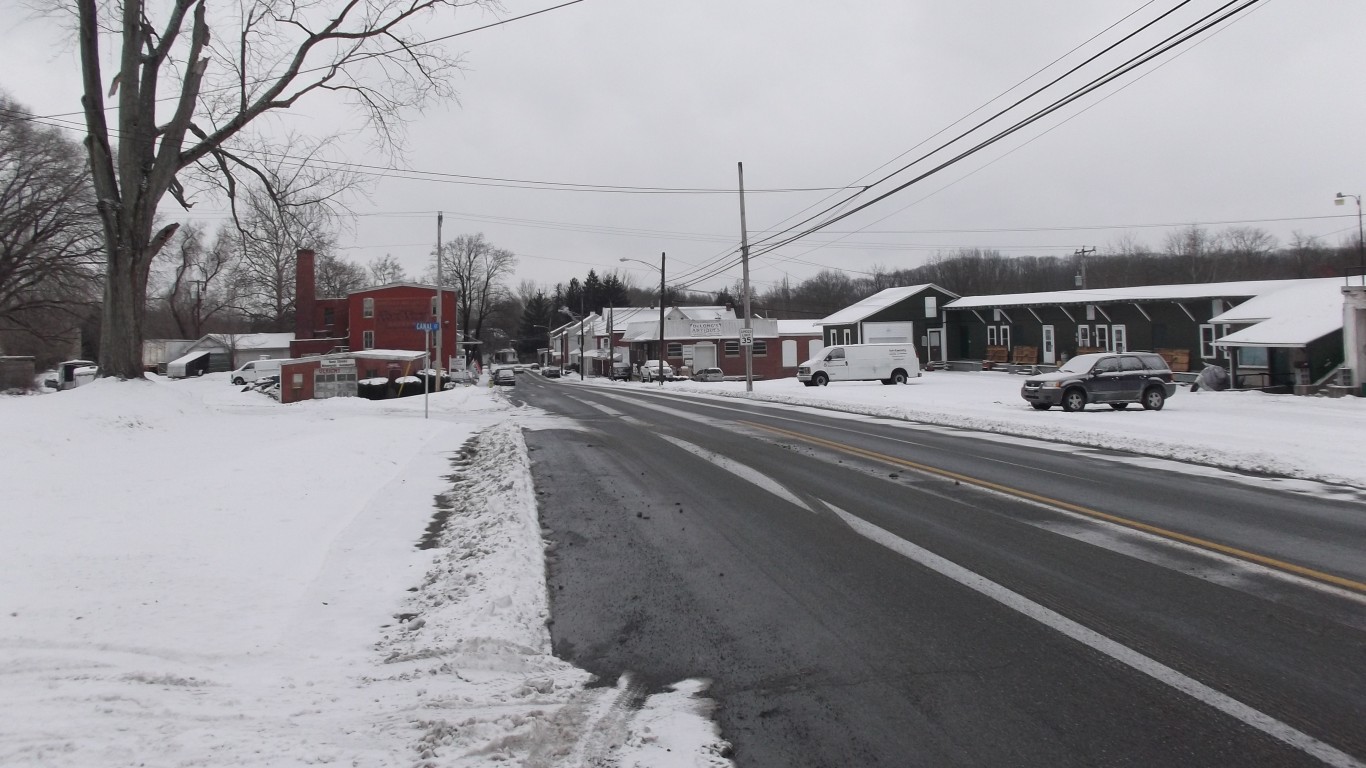
20. Shoemakersville, Pennsylvania
> 2017 Population: 1,334
> Municipal status: Borough
Shoemakersville was a thriving manufacturing area, though it was making clothes, not shoes. The name comes from the last name of the borough’s first settlers, Henry and Charles Shoemaker.
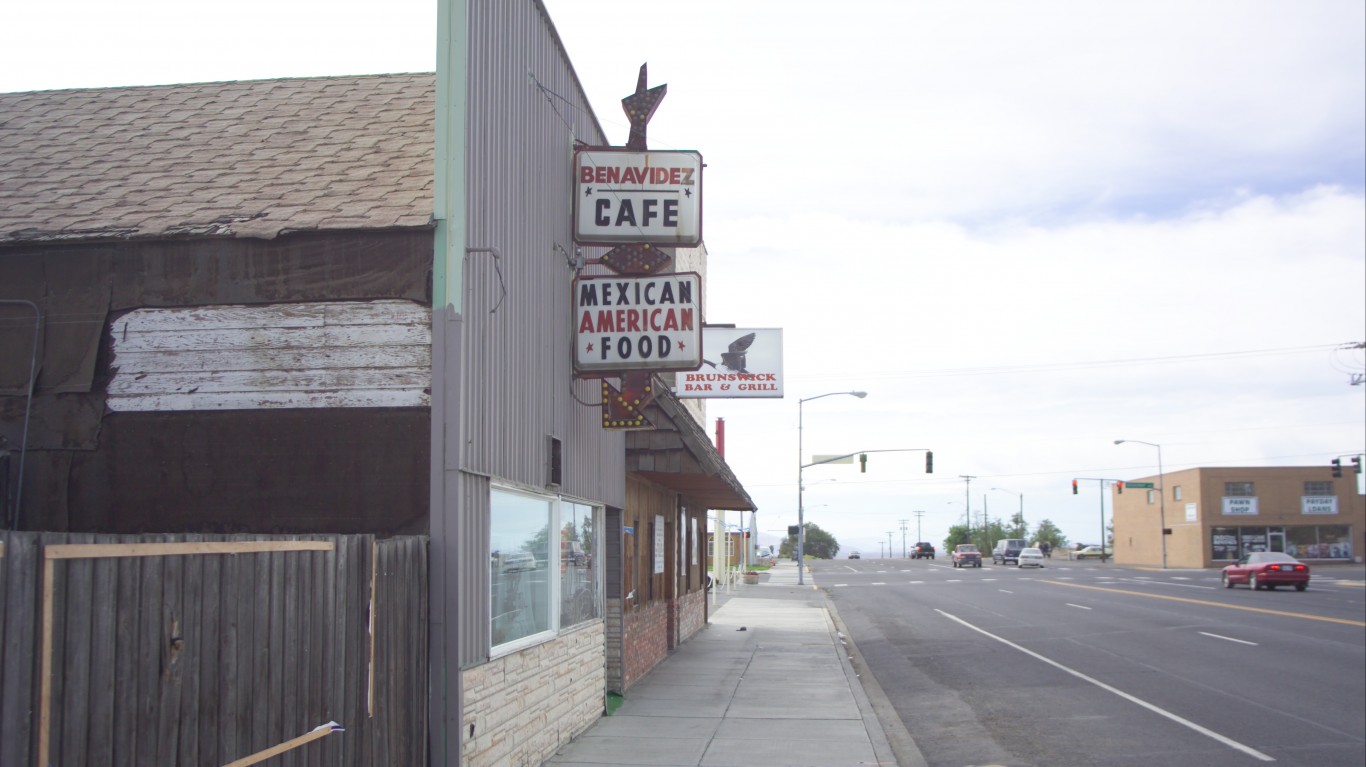
21. Othello, Washington
> 2017 Population: 7,797
> Municipal status: City
The city’s name has nothing to do with William Shakespeare’s famous tragedy. When the area was granted a post office in 1904, a settler from Tennessee suggested to name it Othello after a post office in Tennessee.
[in-text-ad]
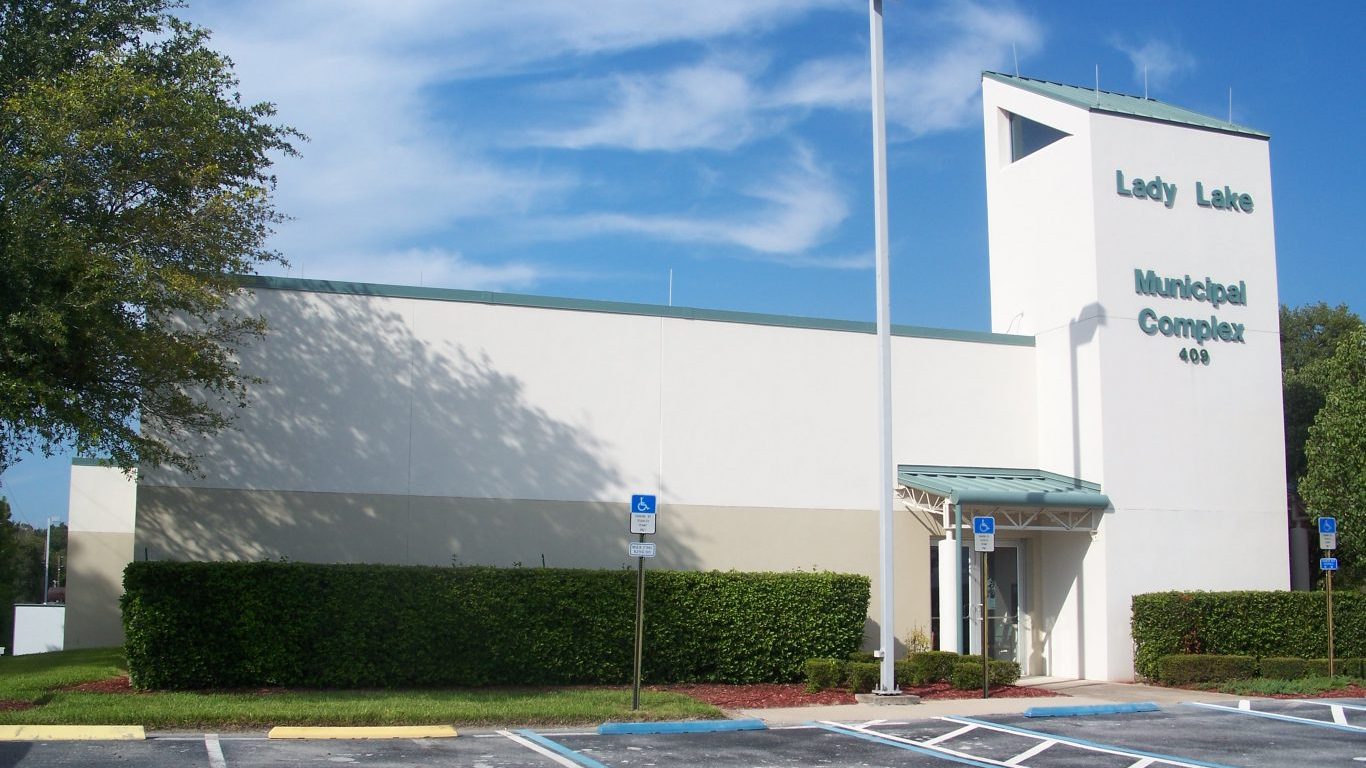
22. Lady Lake, Florida
> 2017 Population: 14,859
> Municipal status: Town
Lady Lake, the northernmost town in west Lake County, was almost named Cooper — if railroad officials had their way. But residents insisted to name the town after a nearby lake, which, according to one legend, Native Americans had so named for a white woman who drowned in it. Some people also say that the lake’s shape is that of a woman when viewed from the air.
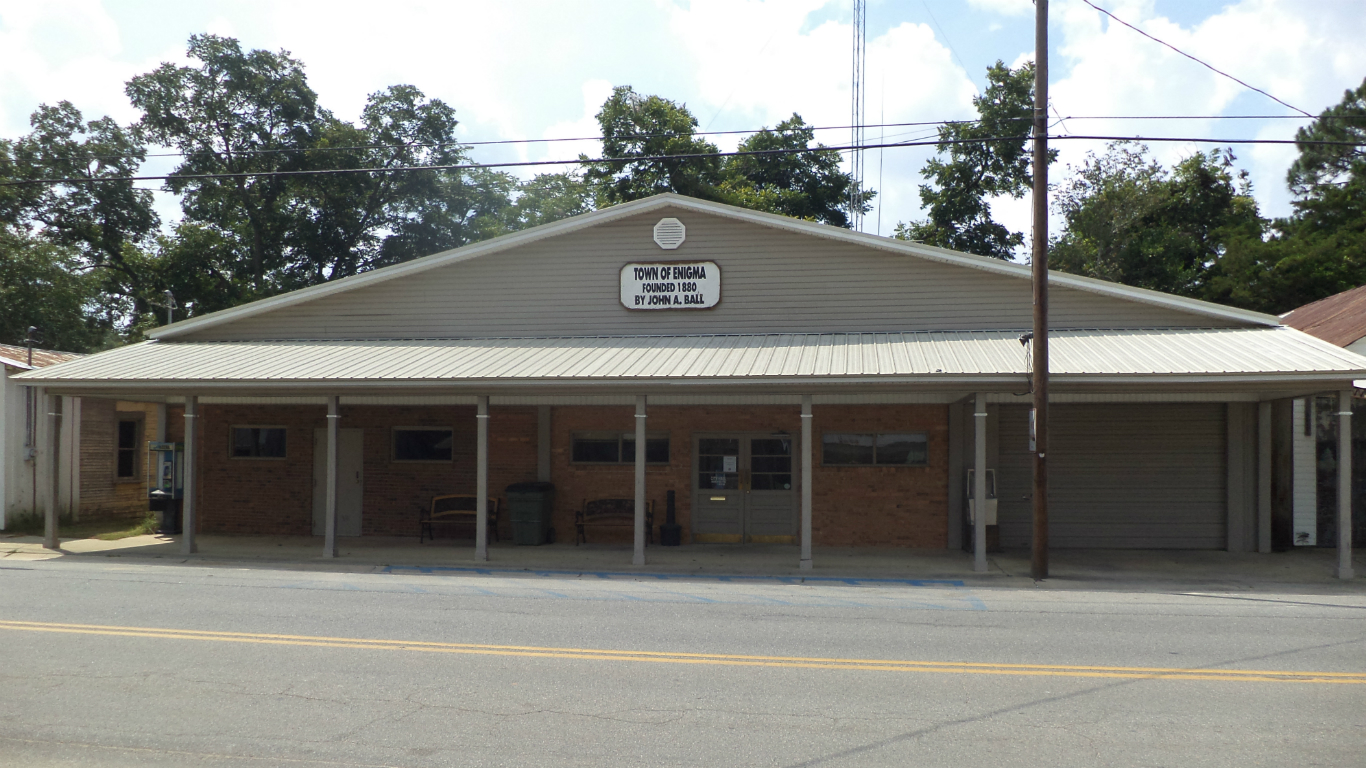
23. Enigma, Georgia
> 2017 Population: 906
> Municipal status: Town
The town’s name was basically the result of one man’s indecision. The settlement’s founder, John A. Ball, was struggling to come with a name, saying it was “a puzzle to name [the town] anyway.”
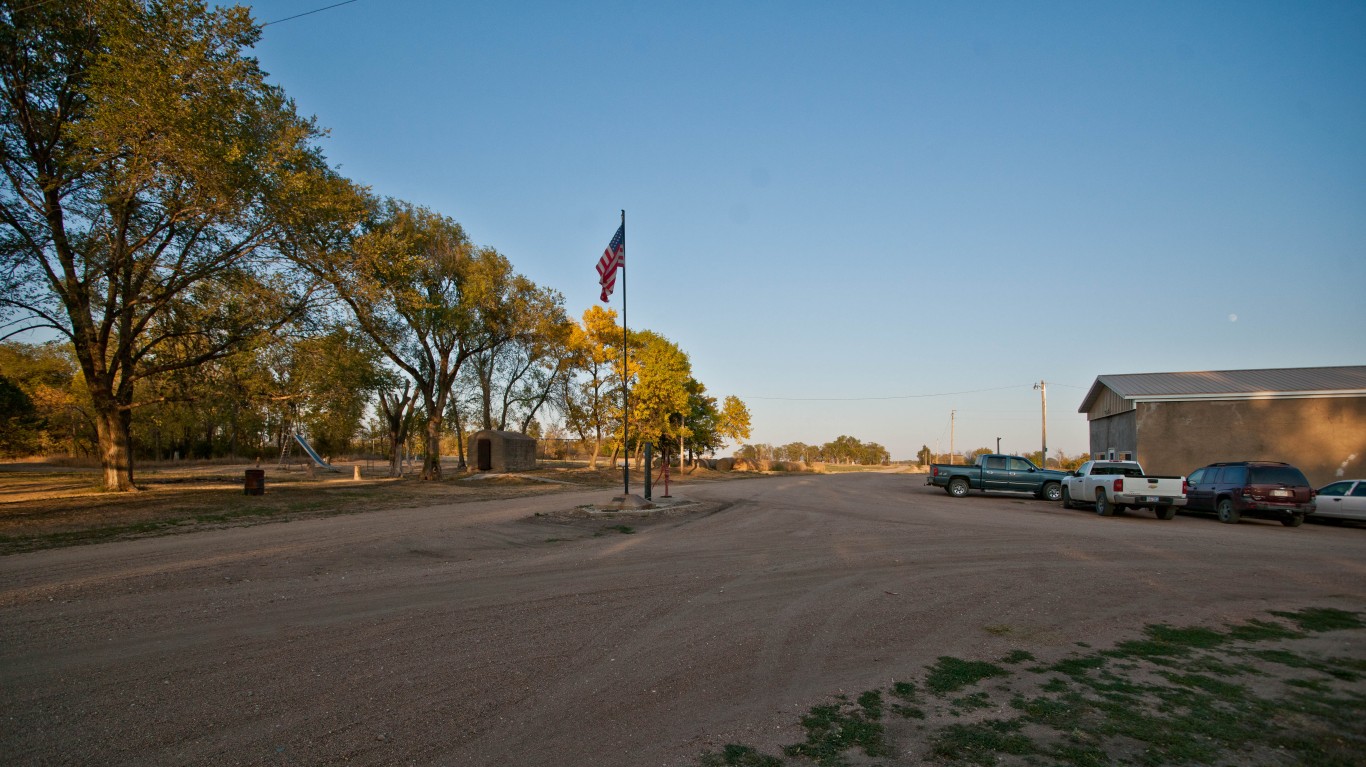
24. Gross, Nebraska
> 2017 Population: 9
> Municipal status: Village
There’s nothing disgusting about this small village in Boyd County, not far from the border with South Dakota. It was named after a couple who opened a store there, hoping to capitalize on the flow of people the railroad, which locals were promised, was going to bring. The railroad, however, was never built, and most people left within a few years.
[in-text-ad-2]
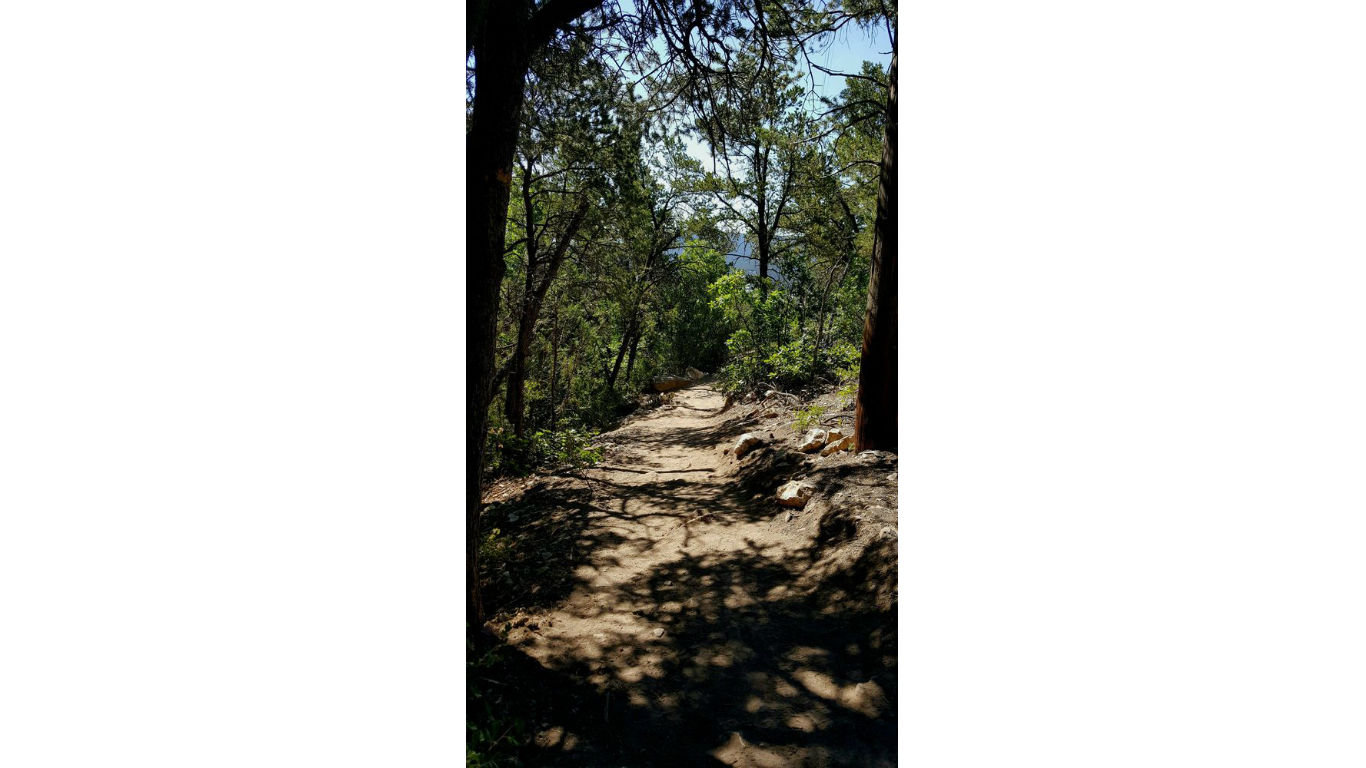
25. Chilili, New Mexico
> 2017 Population: 53
> Municipal status: Census-designated place
Chilili was originally inhabited by Chilili Indians. They abandoned the village in the 1670s because they felt threatened by the Apaches, and most moved to villages on the Rio Grande. Today, most of the people who live there are Hispanic; just over 2% are American Indian.
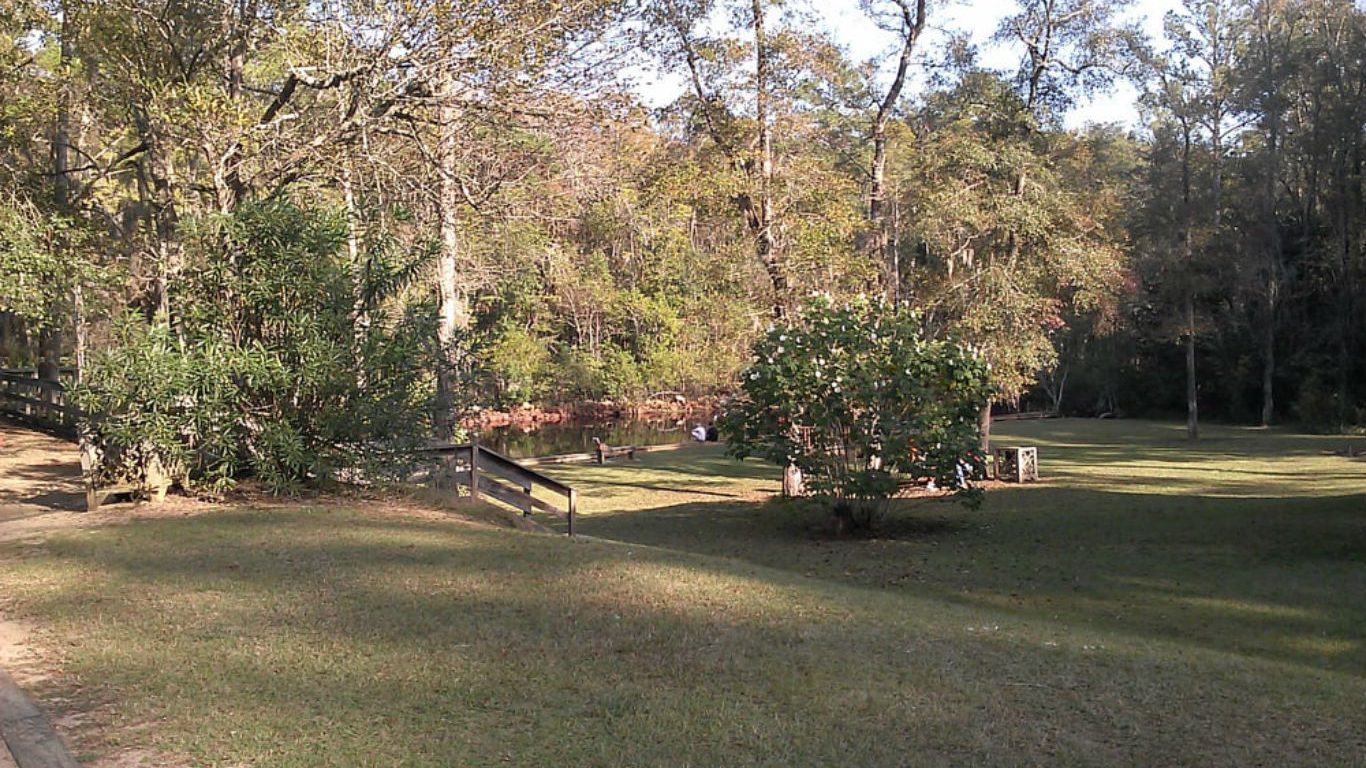
26. Kite, Georgia
> 2017 Population: 363
> Municipal status: City
Contrary to what may first come to mind, the city’s name has nothing to do with flying kites. Kite was named after Shaderick Kight, who owned the land and donated it to the public in the late 1800s. He asked that the name be spelled Kite because it would be easier for people to write and pronounce.
[in-text-ad]
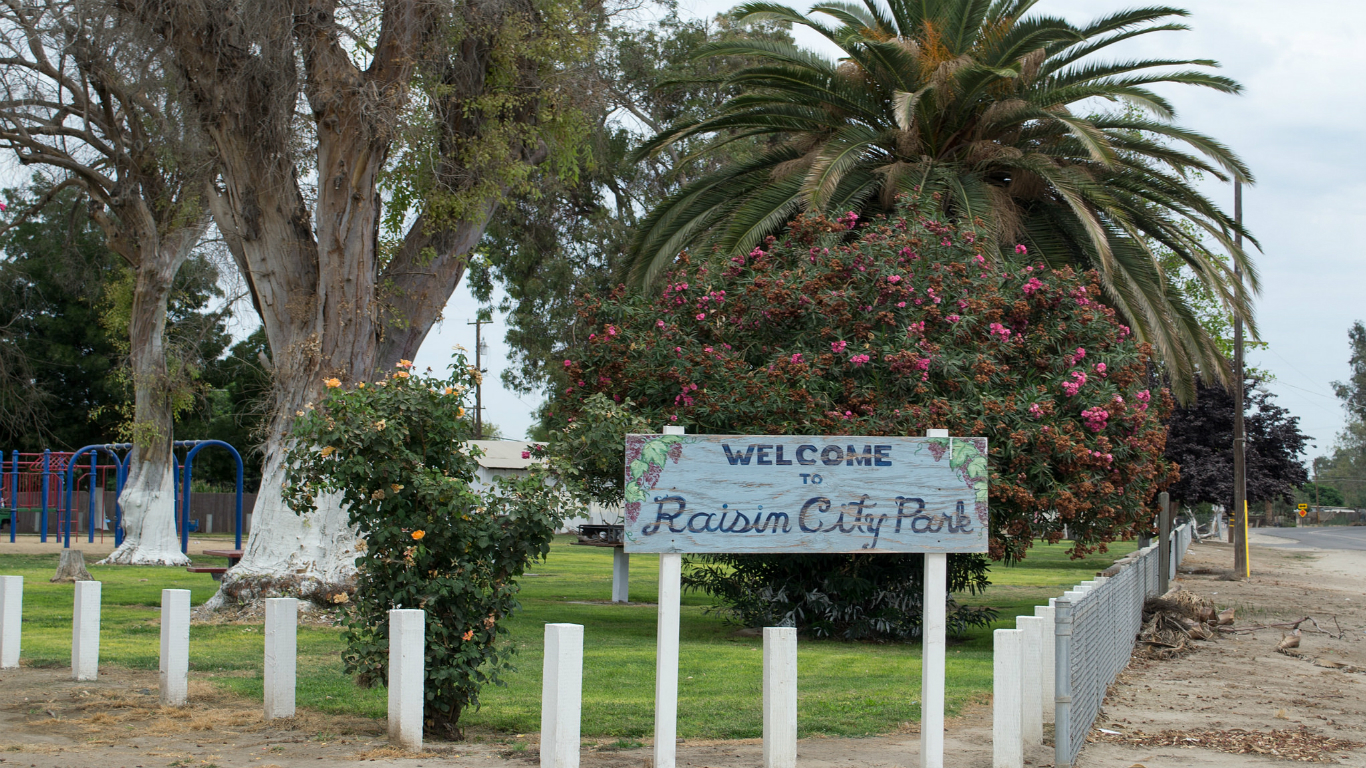
27. Raisin City, California
> 2017 Population: 313
> Municipal status: Census-designated place
Raisin City was once known for its drag races. The community in Fresno County was even regarded by some as the center of the racing world. How exactly Raisin City got its name isn’t clear, but it may have had something to do with the thriving California raisin industry. All of the growers in the state are within 60 miles of Fresno.
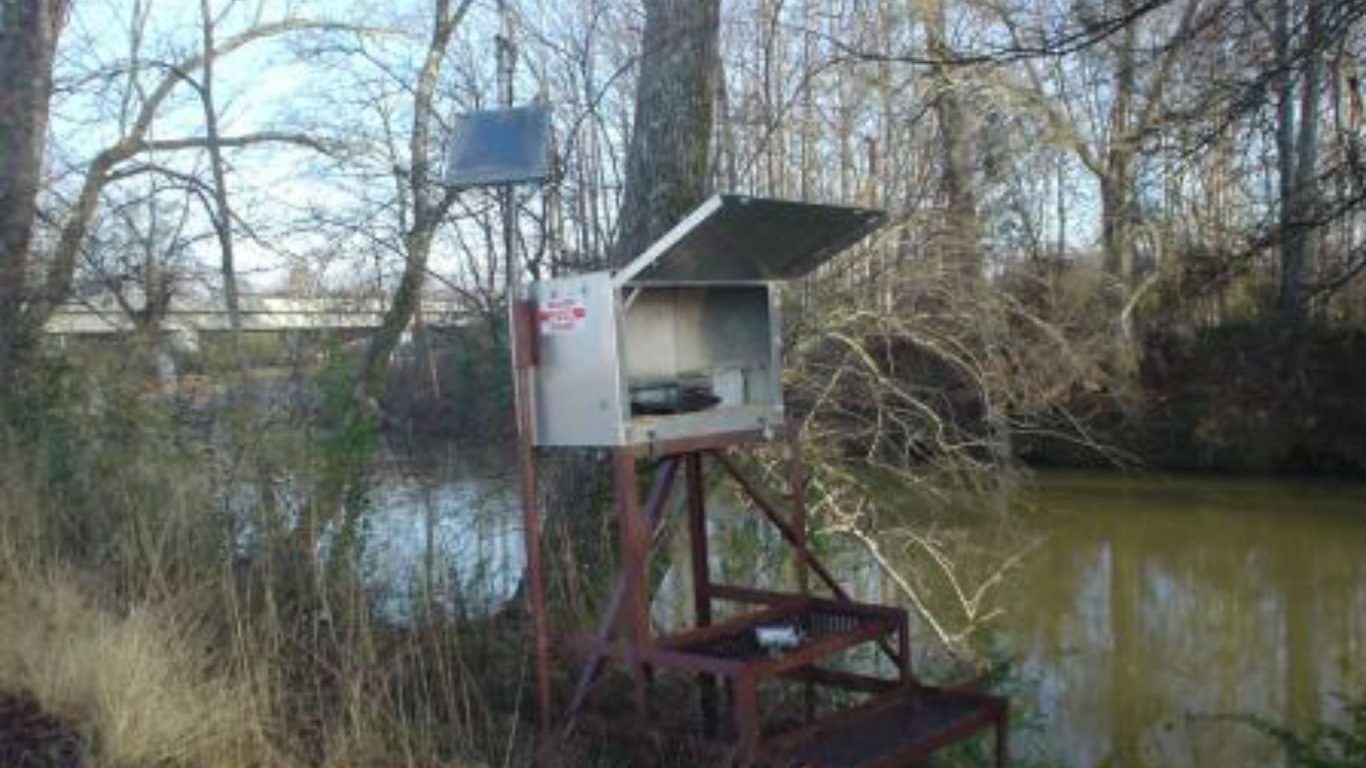
28. Choccolocco, Alabama
> 2017 Population: 2,572
> Municipal status: Census-designated place
Native Americans settled in Choccolocco Valley more than 2,500 years ago. It was a Creek Indian village in the 1830s. Choccolocco is an Indian word meaning a shallow creek with big shoals. Settlers, mostly from North and South Carolina, started moving there in 1834.
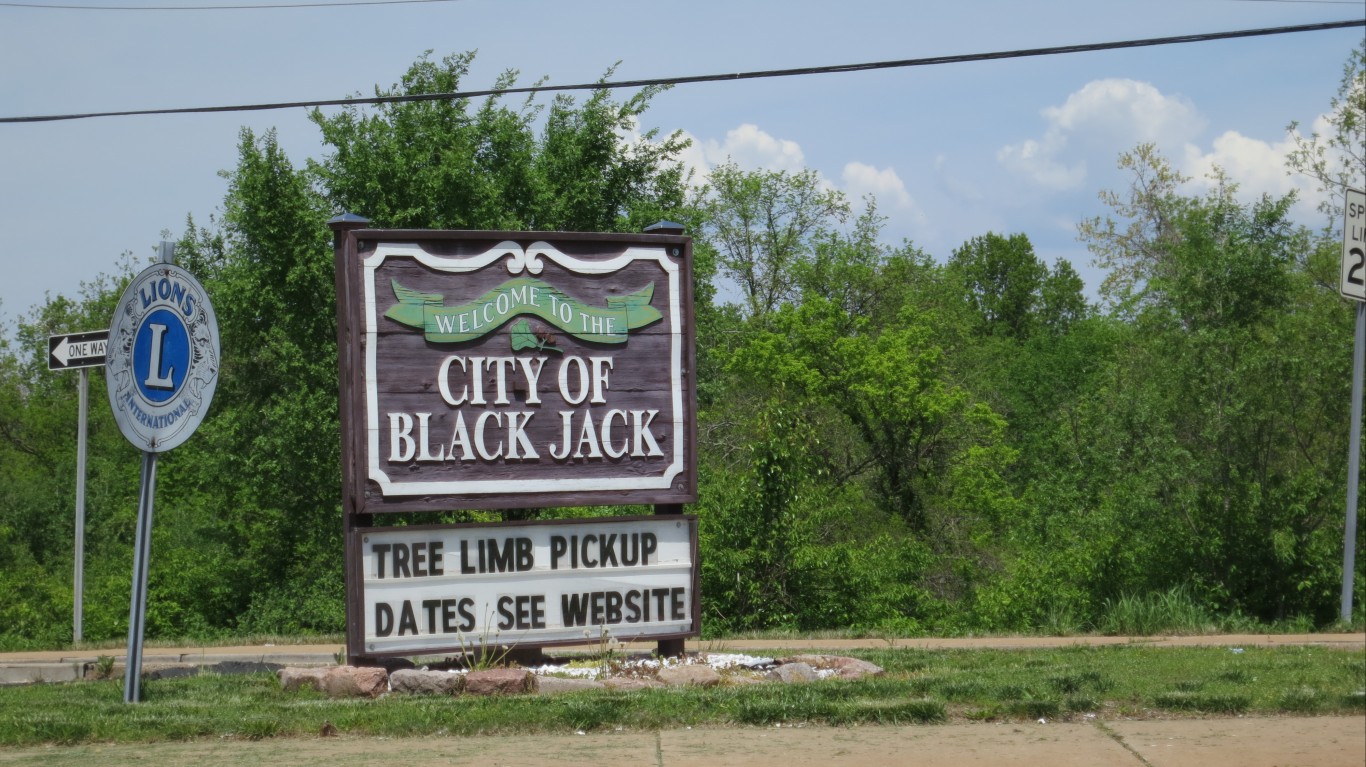
29. Black Jack, Missouri
> 2017 Population: 6,941
> Municipal status: City
The popular card game isn’t the reason for the city’s name. Black Jack is actually named after three gigantic American Oak trees that grew there in the early 19th century. Farmers used them as shelters and a place to relax and meet during breaks.
[in-text-ad-2]
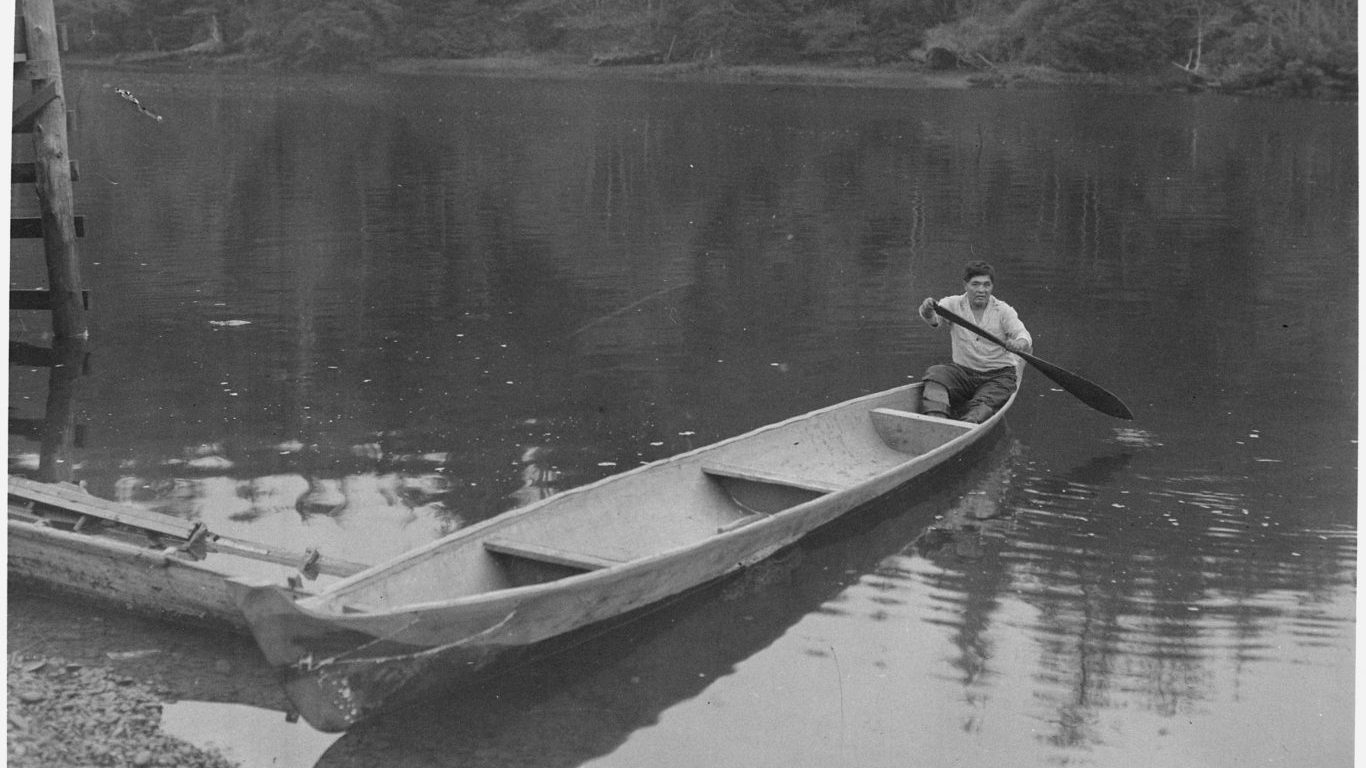
30. Qui-nai-elt Village, Washington
> 2017 Population: 79
> Municipal status: Census-designated place
The community of Qui-nai-elt is located in the southwestern part of the Quinault Indian Nation, about three miles from the Pacific Ocean. About 97% of the area’s population identifies as Native American. The name “Quinault” has been anglicized from “kʷínayɬ,” which was the name of a village on the Quinault River, now called Taholah.
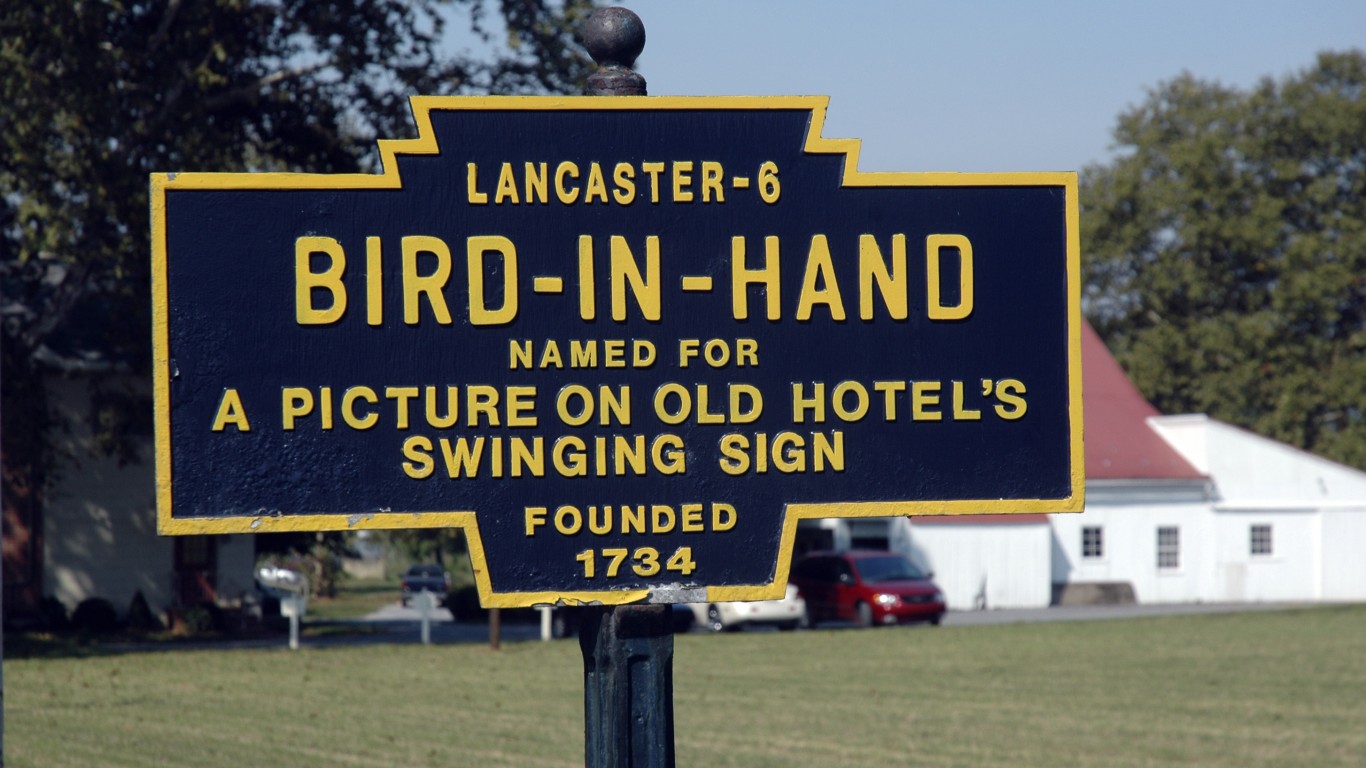
31. Bird-in-Hand, Pennsylvania
> 2017 Population: 564
> Municipal status: Census-designated place
A popular theory about Bird-in-Hand’s name origin has to do with inns. In the early 18th century, the people visiting the area spoke various languages, so locals named their inns after images everyone could understand. One such image was a hand holding a bird. At the time, communities that grew around inns often took the name of the inn because it was the most recognizable place in the area.
[in-text-ad]
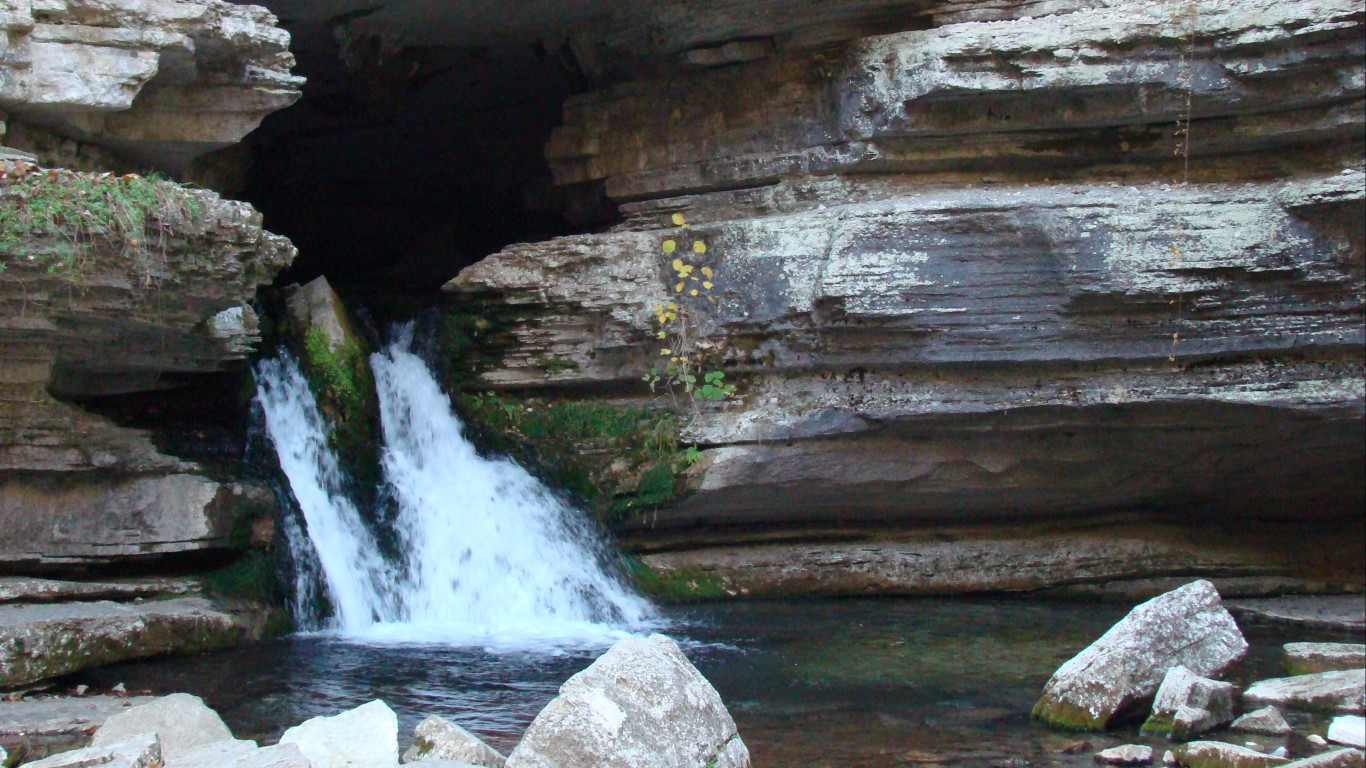
32. Fifty-Six, Arkansas
> 2017 Population: 134
> Municipal status: City
Fifty-six is one of the most visited tourist attraction in Ozark National Forest. When locals applied for a post office in 1918, they suggested the name Newcomb, but it was rejected. They then suggested with Fifty-six because, it’s assumed, this was the number of the community’s school district.
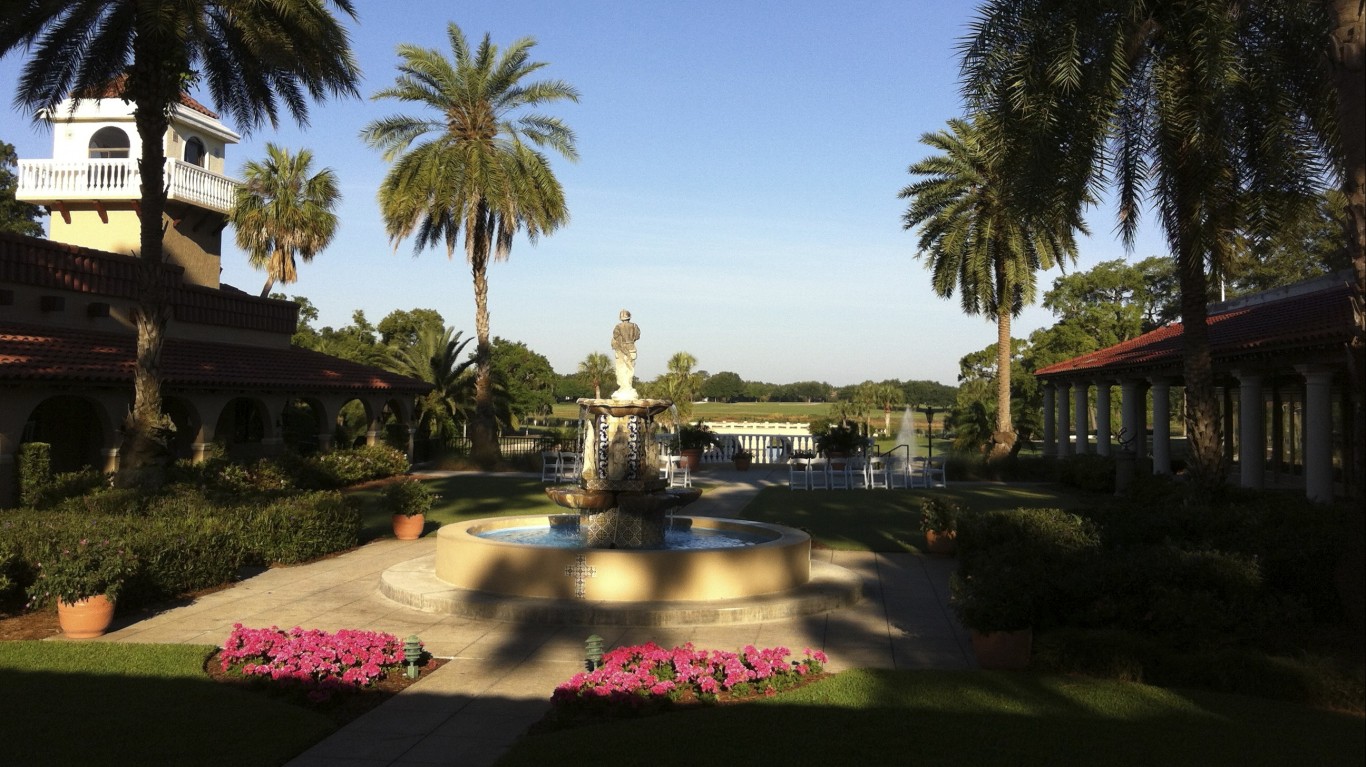
33. Howey-in-the-Hills, Florida
> 2017 Population: 1,287
> Municipal status: Town
The town, founded by William John Howey, was incorporated as Howey in 1925. It got its new name two years later to reflect the rolling hills and lakes, which Howey nicknamed “the Florida Alps.”
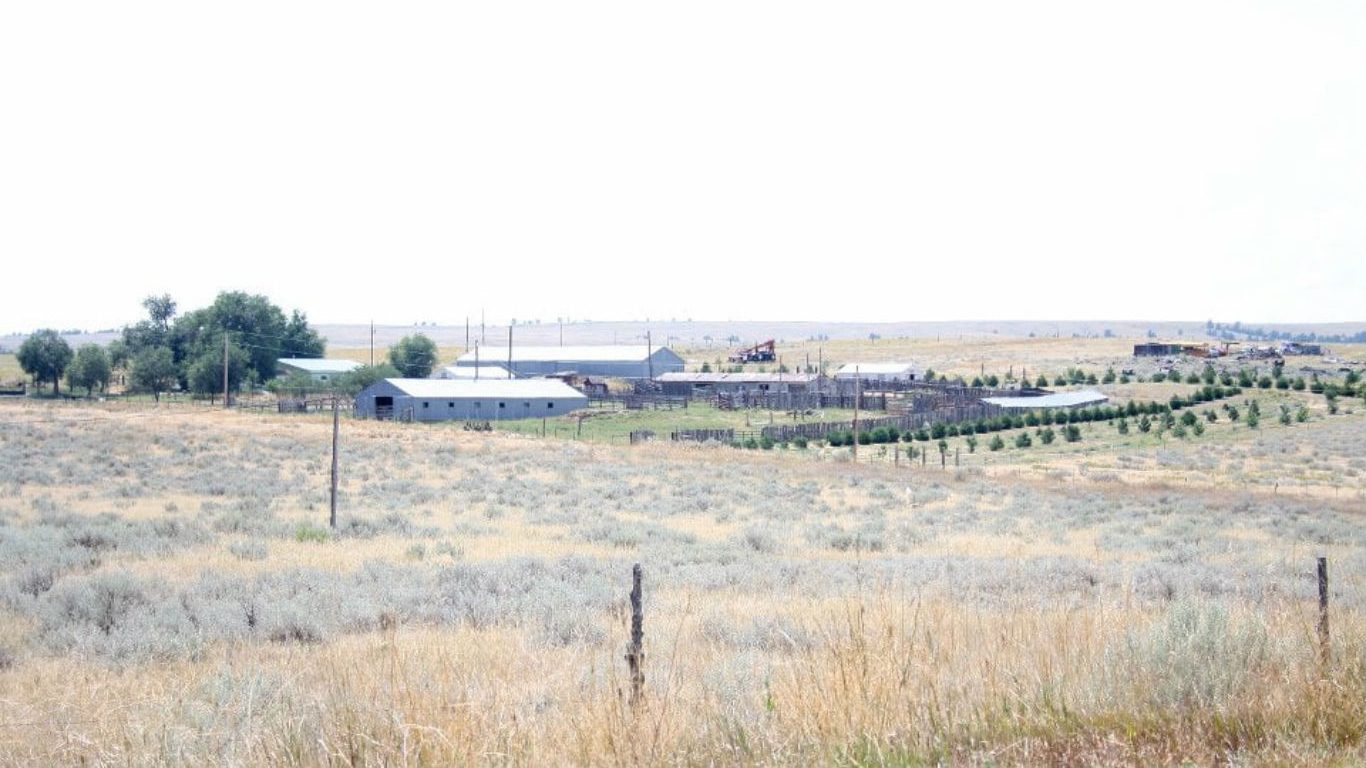
34. Y-O Ranch, Wyoming
> 2017 Population: 62
> Municipal status: Census-designated place
Y-O Ranch, Wyoming, is a census-designated place located in Platte County, and it borders Chugcreek. Many people probably confuse it with the popular Y.O. Headquarters ranch in Texas, which draws tourists interested in hunting.
[in-text-ad-2]
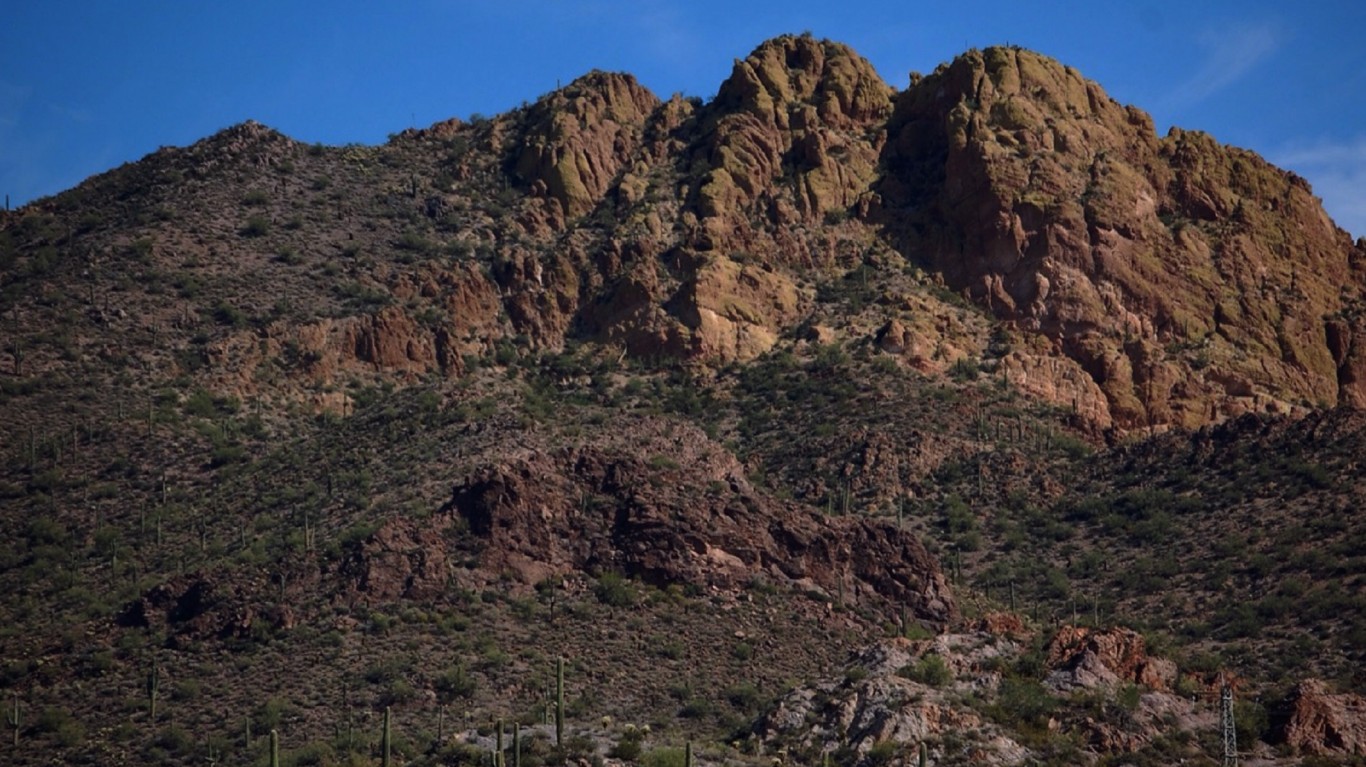
35. Top-of-the-World, Arizona
> 2017 Population: 325
> Municipal status: Census-designated place
Top-of-the-World is certainly not named for its elevation, which is just 4,528 feet. For comparison, Humphreys Peak is the highest point in Arizona at 12,633 feet, almost three times as high.
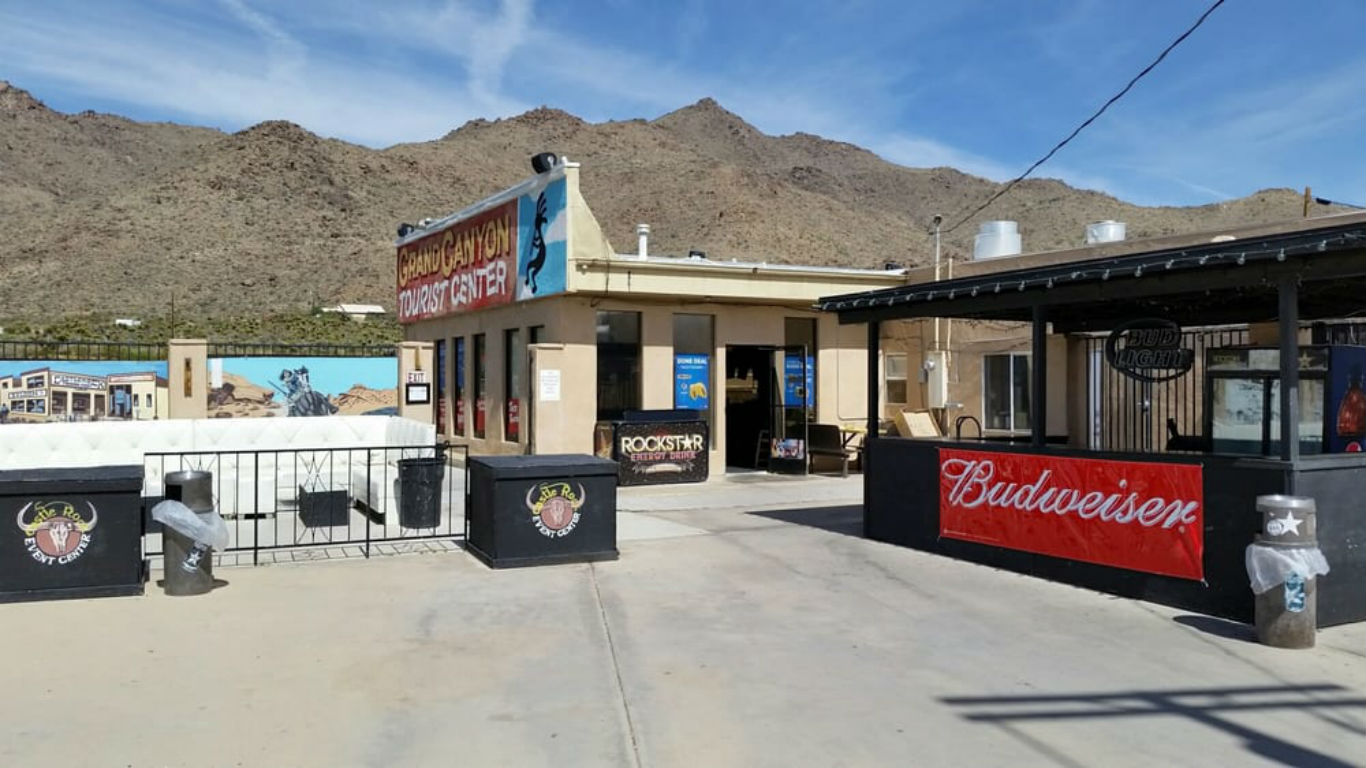
36. So-Hi, Arizona
> 2017 Population: 223
> Municipal status: Census-designated place
So-Hi is another fascinating name of a community in the Grand Canyon State. There’s no indication, however, that it has anything to do with smoking weed. Geographically, too, it’s not at a very high elevation either — 3,740 feet.
[in-text-ad]
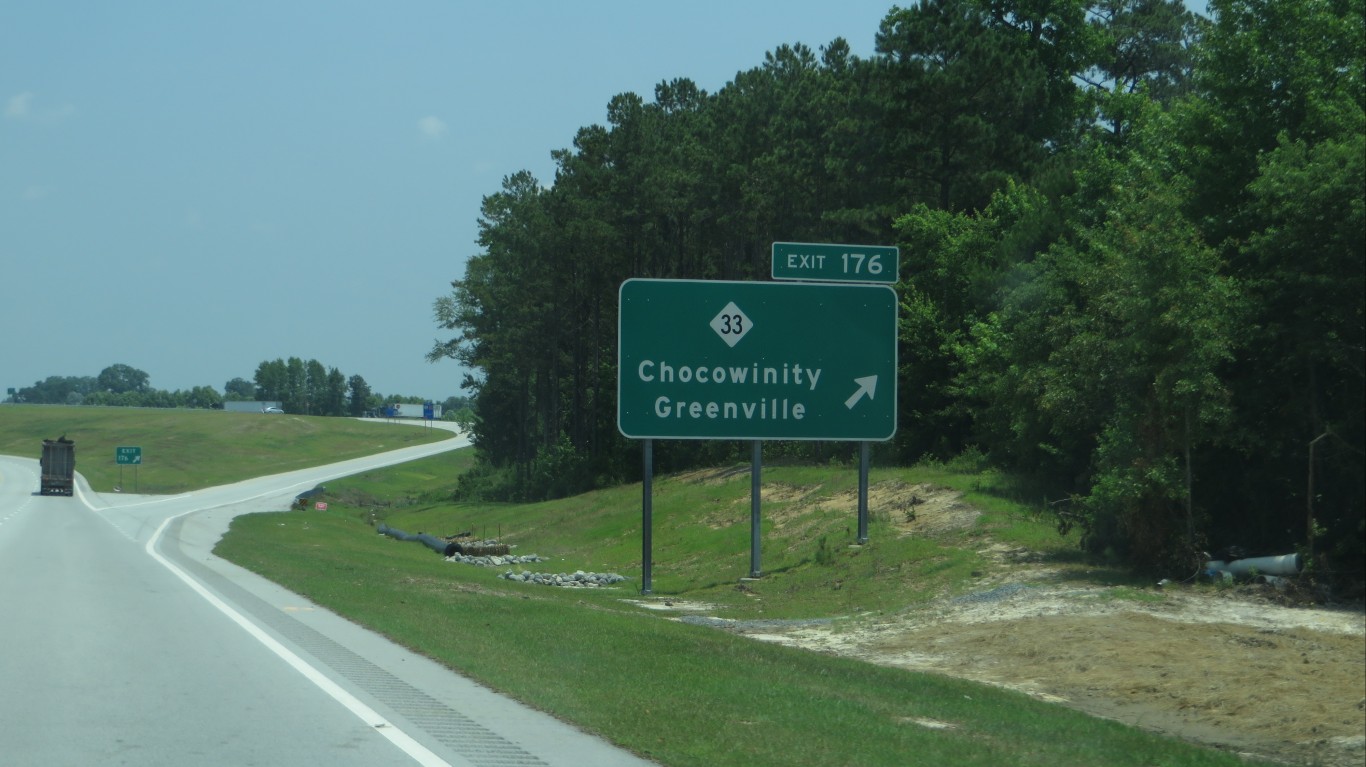
37. Chocowinity, North Carolina
> 2017 Population: 867
> Municipal status: Town
Chocowinity is derived from the Tuscarora word for otter, which are found in North Carolina’s inland waterways. The town was originally known as Godley’s Cross Roads. The name was changed to Chocawanateth before the Revolutionary War.
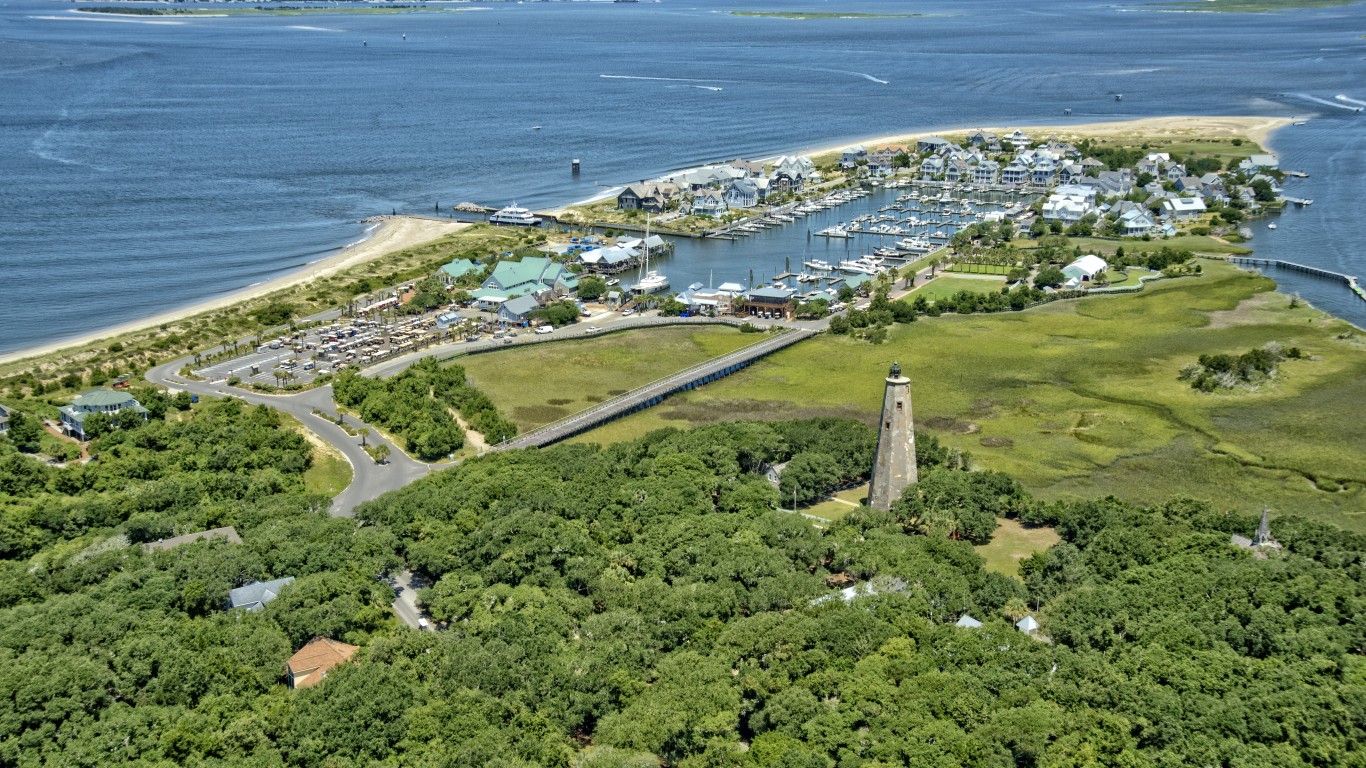
38. Bald Head Island, North Carolina
> 2017 Population: 225
> Municipal status: Village
Bald Head Island used to be a safe haven for pirates. Edward Teach, more commonly known as Blackbeard, was a regular visitor. Today, you can reach this resort community, which is home to the oldest lighthouse in North Carolina, Old Baldy, only by boat. Cars are not allowed on the island.
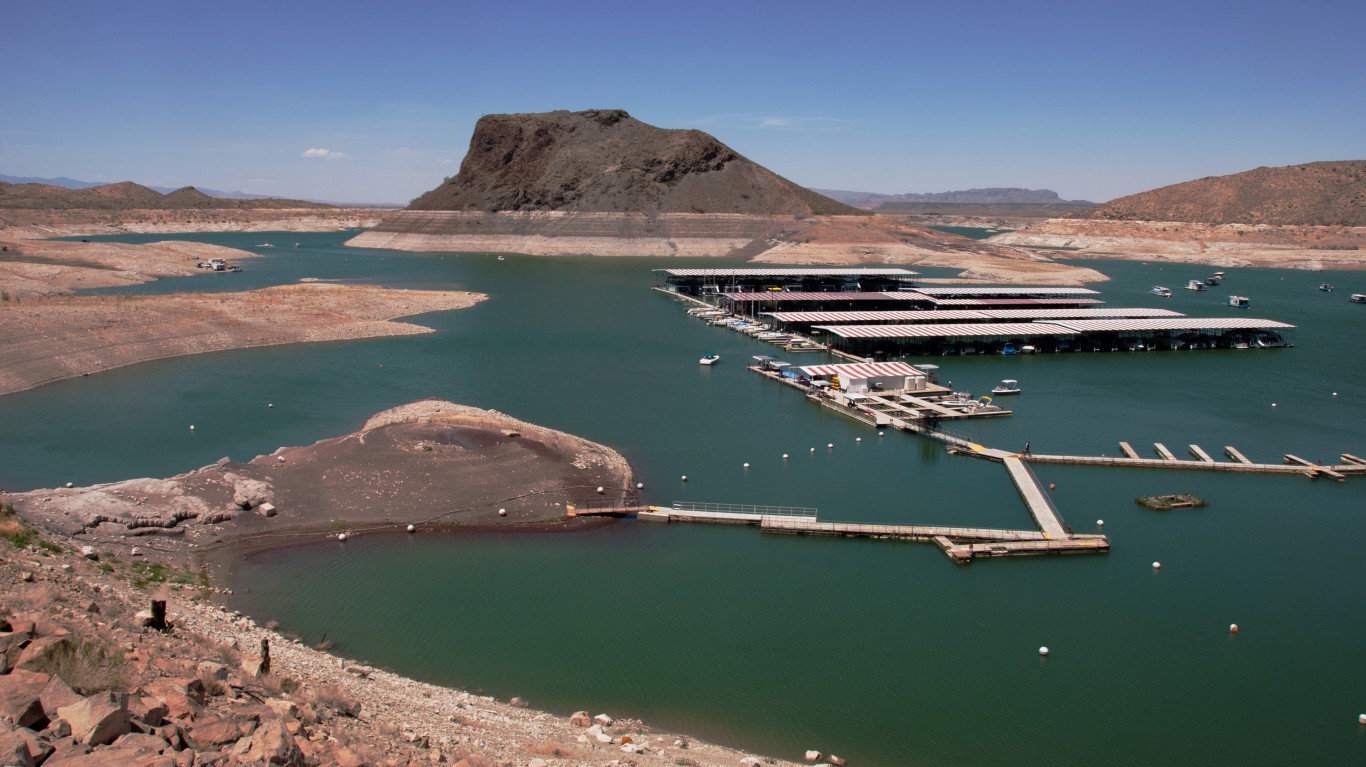
39. Elephant Butte, New Mexico
> 2017 Population: 1,393
> Municipal status: City
The city is located right by the famous Elephant Butte Lake State Park and Reservoir, which is 40 miles long and has over 200 miles of shoreline. The name came from the elephant shape of an eroded core of a volcano, which is now an island in the reservoir.
[in-text-ad-2]
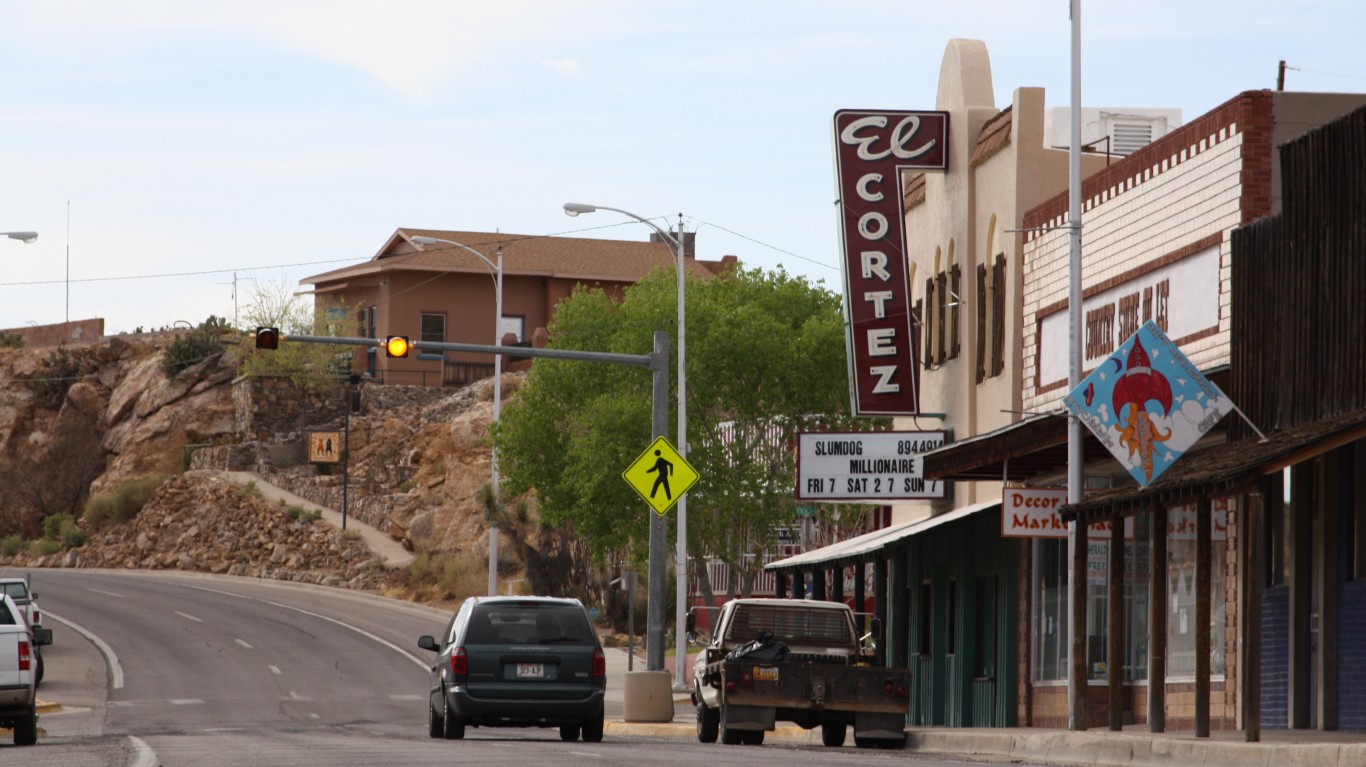
40. Truth or Consequences, New Mexico
> 2017 Population: 6,029
> Municipal status: City
Truth or Consequences was initially dubbed Hot Springs due to the abundance of hot springs in Sierra County where it’s located. The city was renamed in 1950 after radio host Ralph Edwards announced he would broadcast an episode of his show, “Truth or Consequences,” from any American town that changed its name to match that of his program.
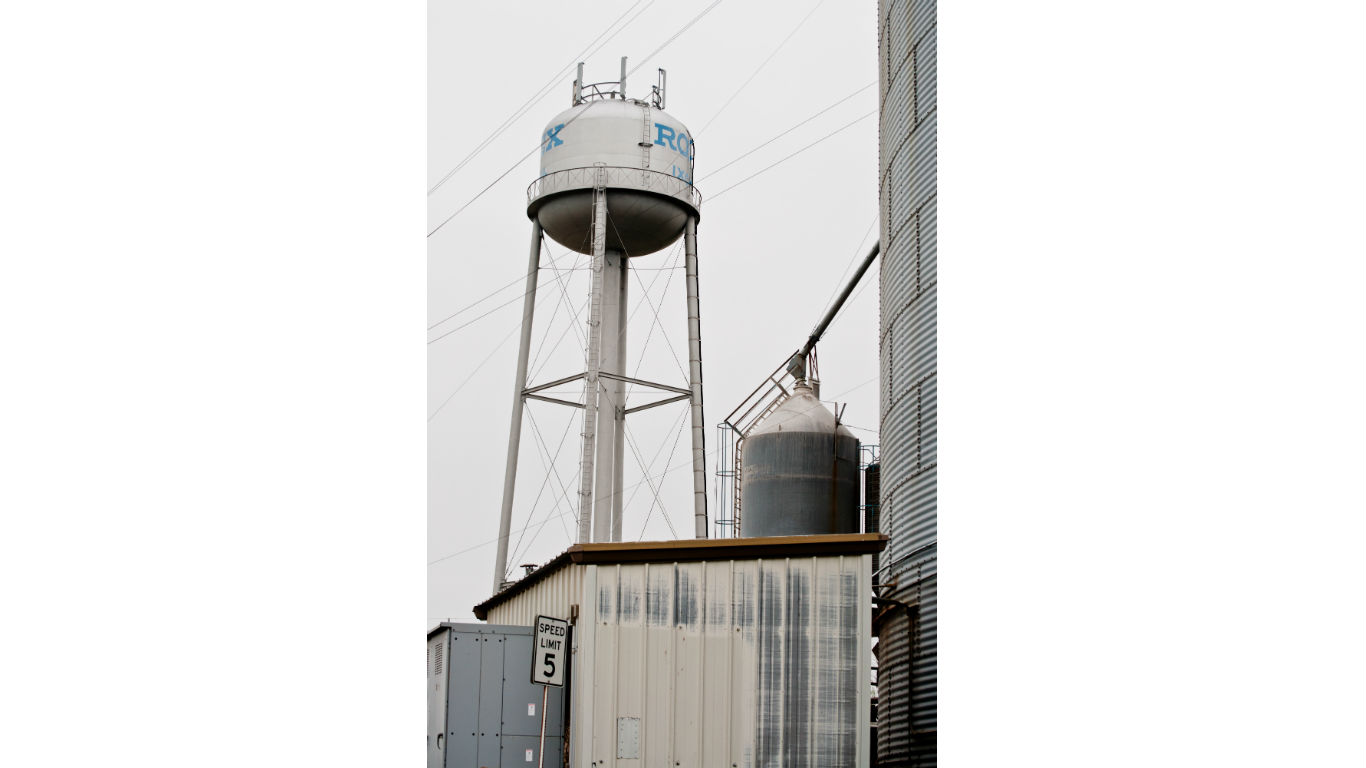
41. Ixonia, Wisconsin
> 2017 Population: 1,931
> Municipal status: Census-designated place
When you pick a name at random, you may get something like Ixonia. This is exactly what happened with this Jefferson County community. Some residents called the area Concord, but others had not decided on a name. To decide on a name, as local tradition tells it, residents put all letters of the alphabet on slips of paper and placed in a hat, and one person was selected to pick out slips until a coherent word was formed. Ixonia was the result.
[in-text-ad]
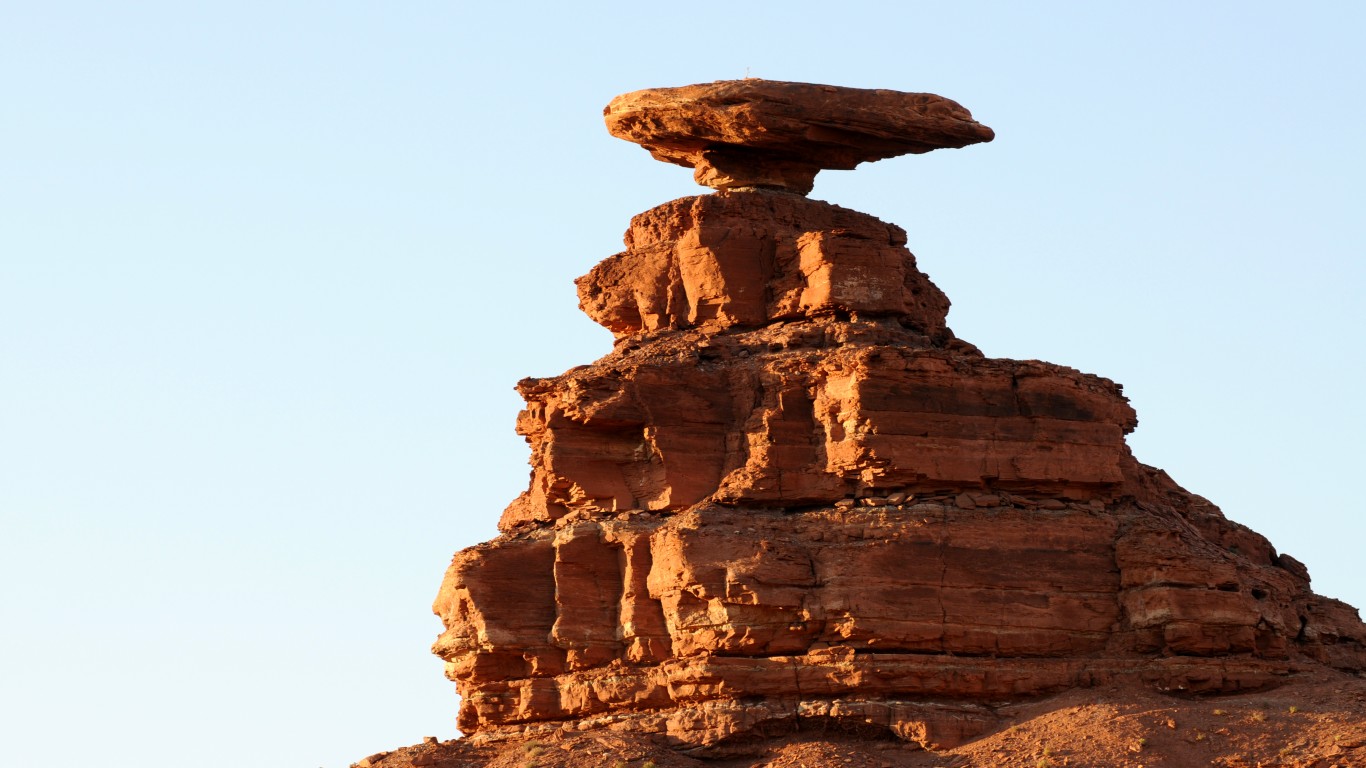
42. Mexican Hat, Utah
> 2017 Population: 11
> Municipal status: Census-designated place
Founded by an oil speculator in 1908, this community is named for a rock formation about two-and-a-half miles to the northeast that is thought to resemble, from certain angles, a sombrero — a Mexican hat.
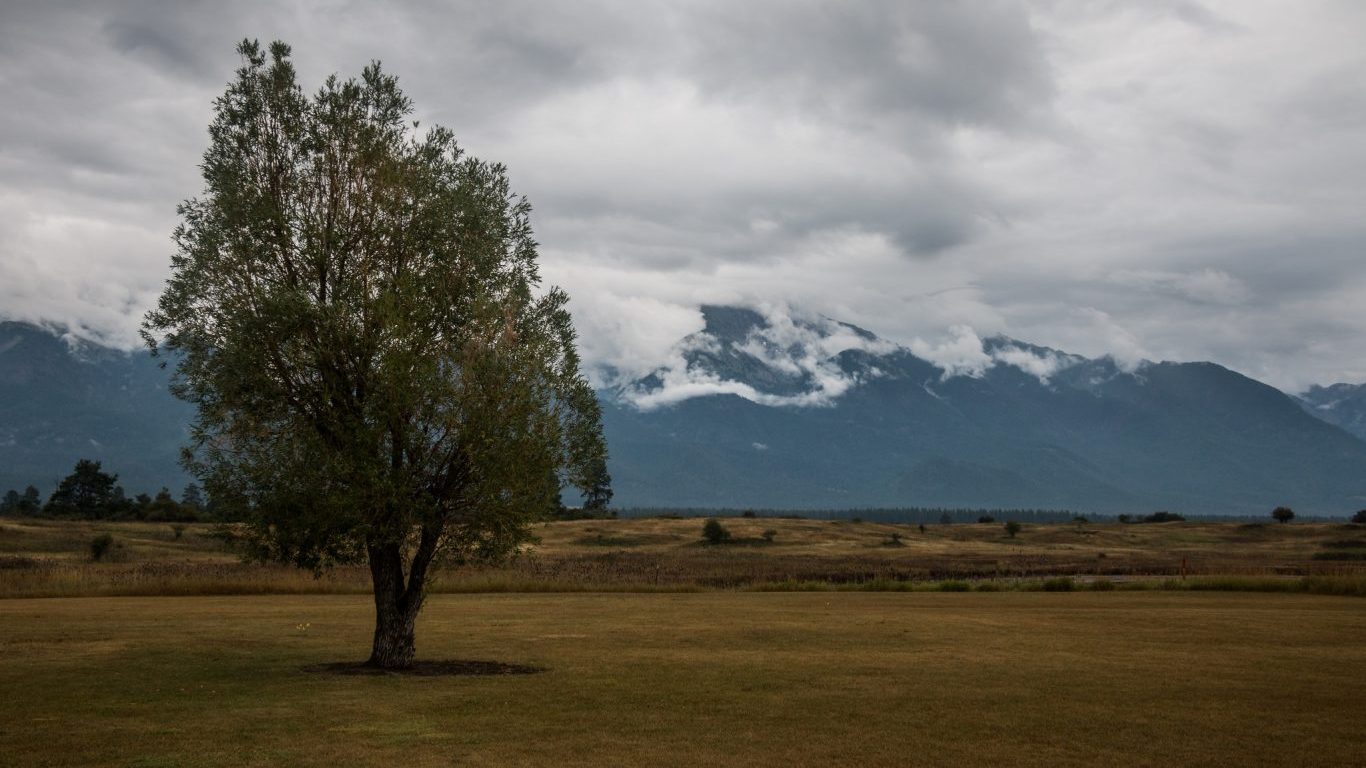
43. Kicking Horse, Montana
> 2017 Population: 47
> Municipal status: Census-designated place
The community is located right by the Kicking Horse Reservoir, a 785-acre lake near Nine Pipes Reservoir known for its bass. The community of about 50 residents has a Facebook page listing upcoming events there and nearby.
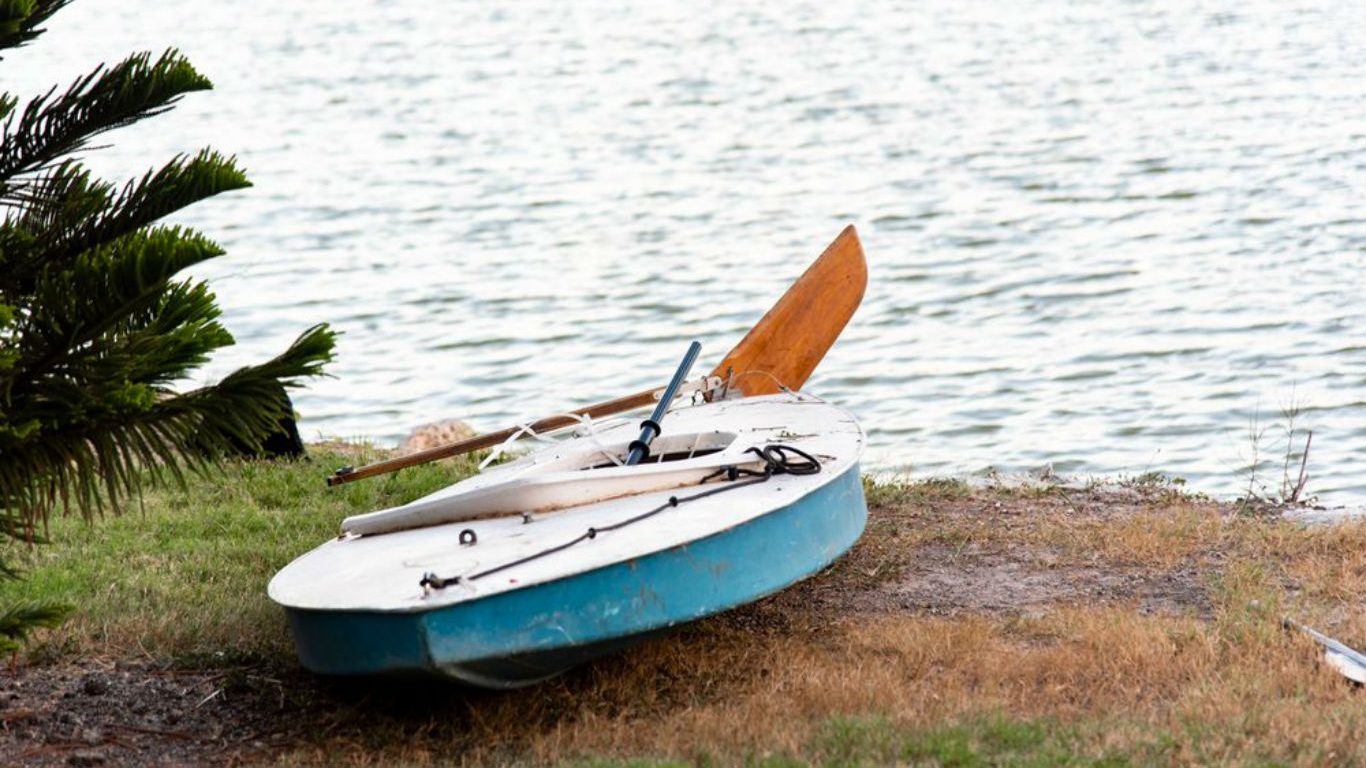
44. Reid Hope King, Texas
> 2017 Population: 1,160
> Municipal status: Census-designated place
Reid Hope King is located about five miles east of downtown Brownsville in Cameron County. It consists of primarily Hispanic, lower-income families.
[in-text-ad-2]
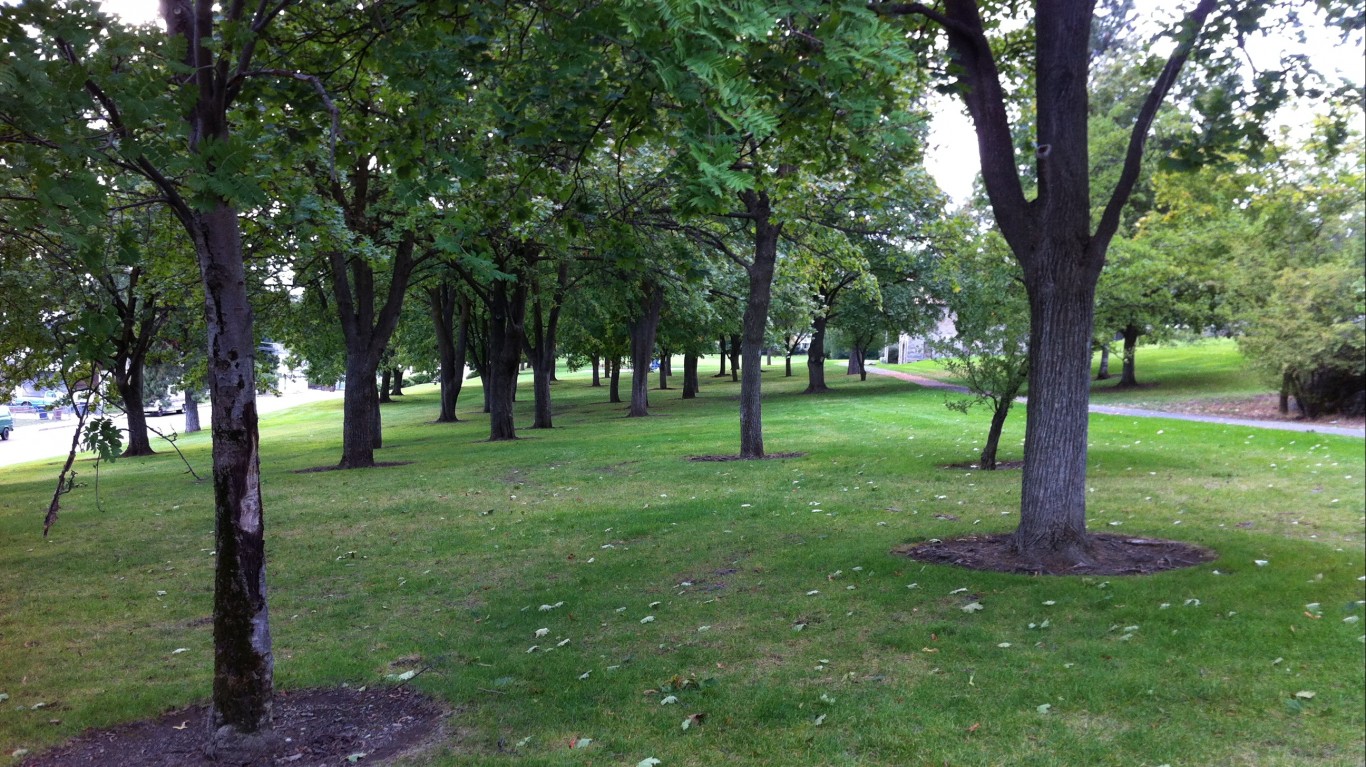
45. Minnehaha, Washington
> 2017 Population: 11,767
> Municipal status: Census-designated place
The name of this community was chosen from a newspaper editorial written in 1891. The author wrote about Burnt Bridge Creek and called it “Minnehaha, laughing water,” from Henry Wadsworth Longfellow’s poem, “Hiawatha.” Locals liked the name and decided to keep it. Until then, the area was known as the Black Forest because of the abundance of thick timber.
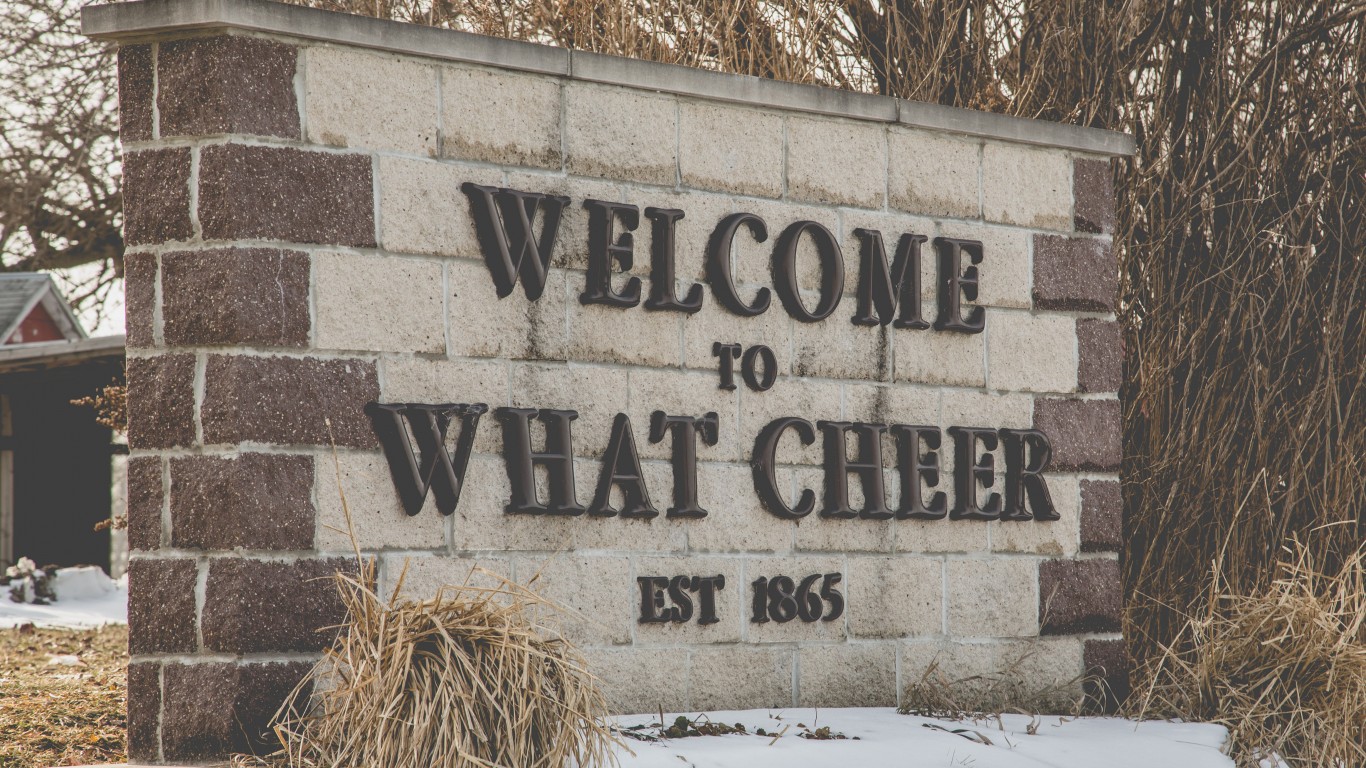
46. What Cheer, Iowa
> 2017 Population: 684
> Municipal status: City
There are several theories as to the origin of this city’s name. An account of railway-connected place names published in 1908 attributes it to a Scottish miner, who discovered coal in the area and exclaimed “What cheer!”– an old English expression. Another possibility is that a 19th century store owner in what was then called Petersburg, knowing the expression, simply thought it would be a good name for the town’s first post office.
[in-text-ad]
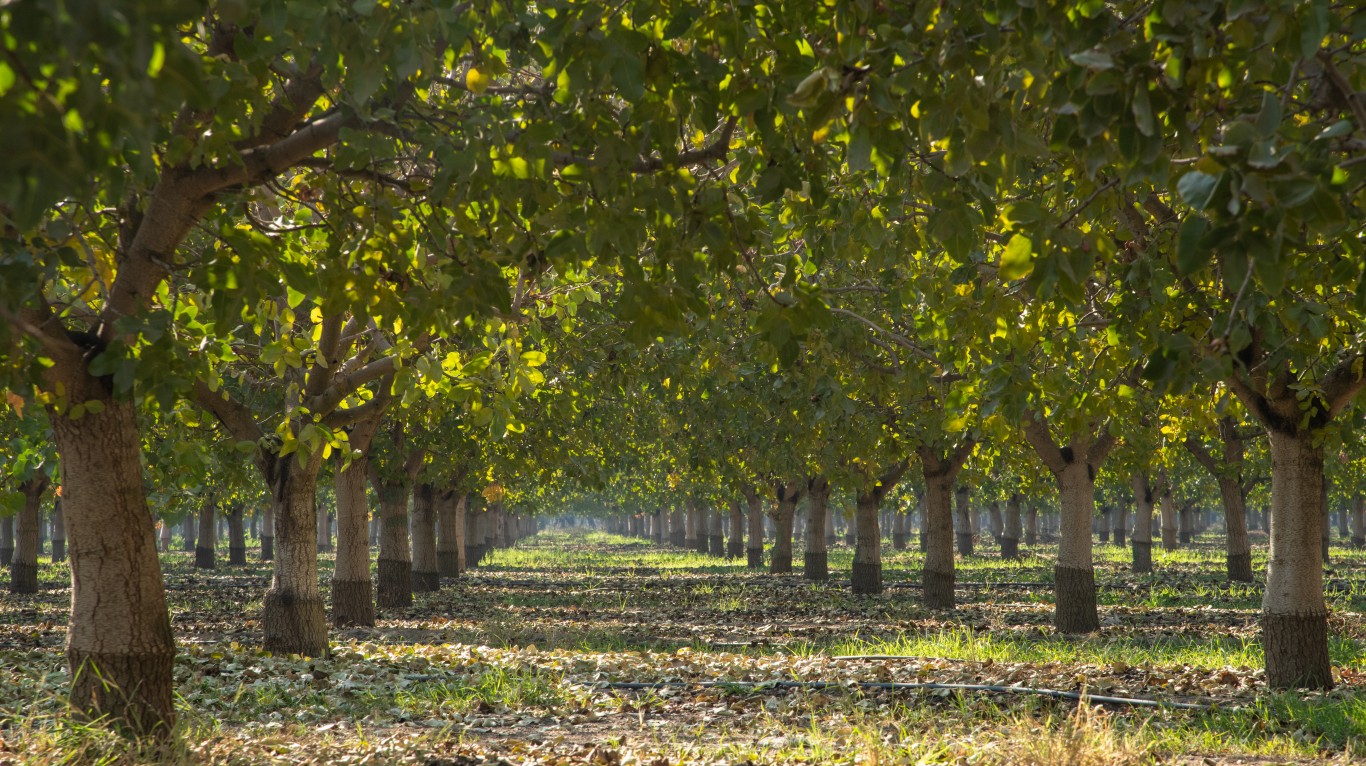
47. Chowchilla, California
> 2017 Population: 18,314
> Municipal status: City
The city in Madera County is one of the most populous on our list. A popular event that draws tourists to the city is the Chowchilla Stampede, which involves a cattle drive down a boulevard. Another main attraction is the Fossil Discovery Center of Madera County, where people can see preserved fossils from 700,000 years ago.
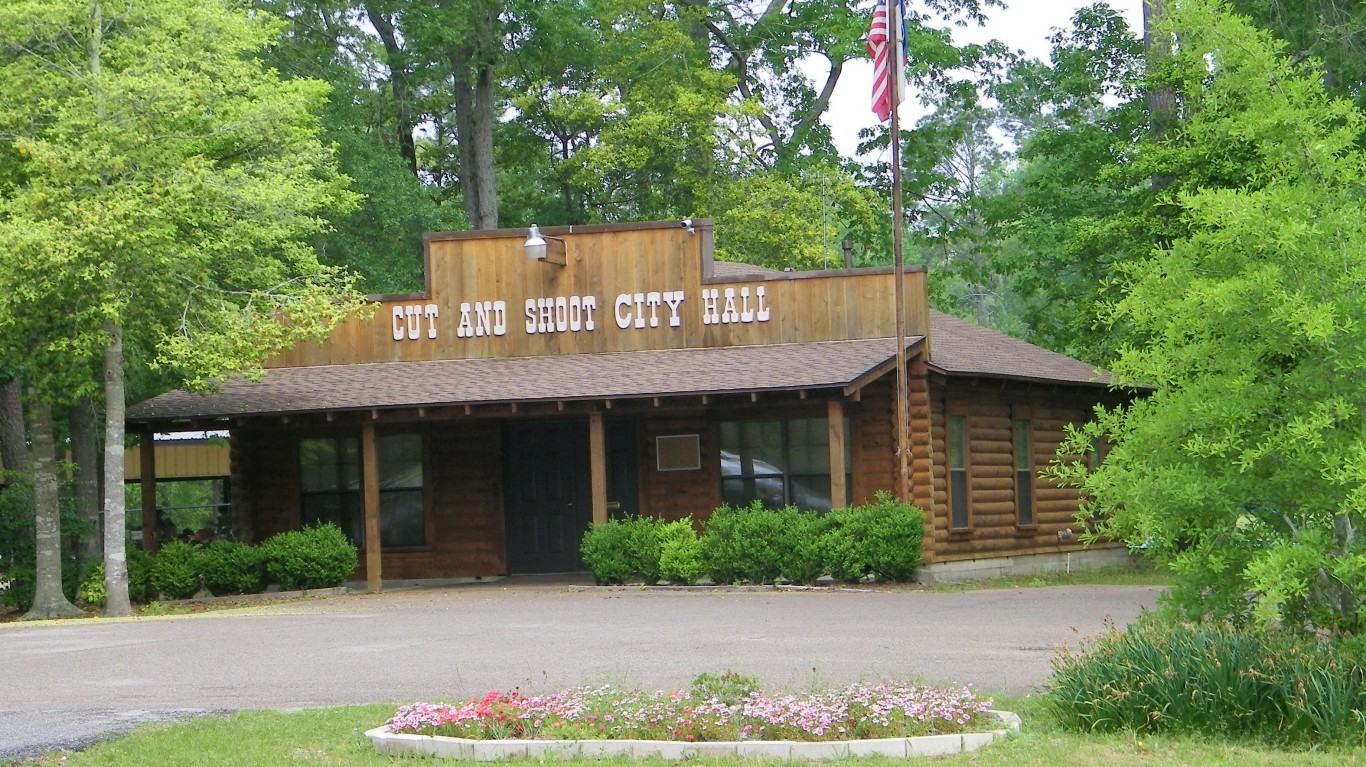
48. Cut and Shoot, Texas
> 2017 Population: 1,551
> Municipal status: City
Local legend has it that the name of this city derives from a disagreement in 1912 at the local church, with churchgoers arguing over land claims, or steeple design, or who the preacher should be. Whatever the source of the dispute, a small boy at the scene is said to have announced his annoyance with the goings-on by saying, “I’m going to cut around the corner and shoot through the bushes in a minute.” Exactly when locals decided to name their city after the statement is not recorded.
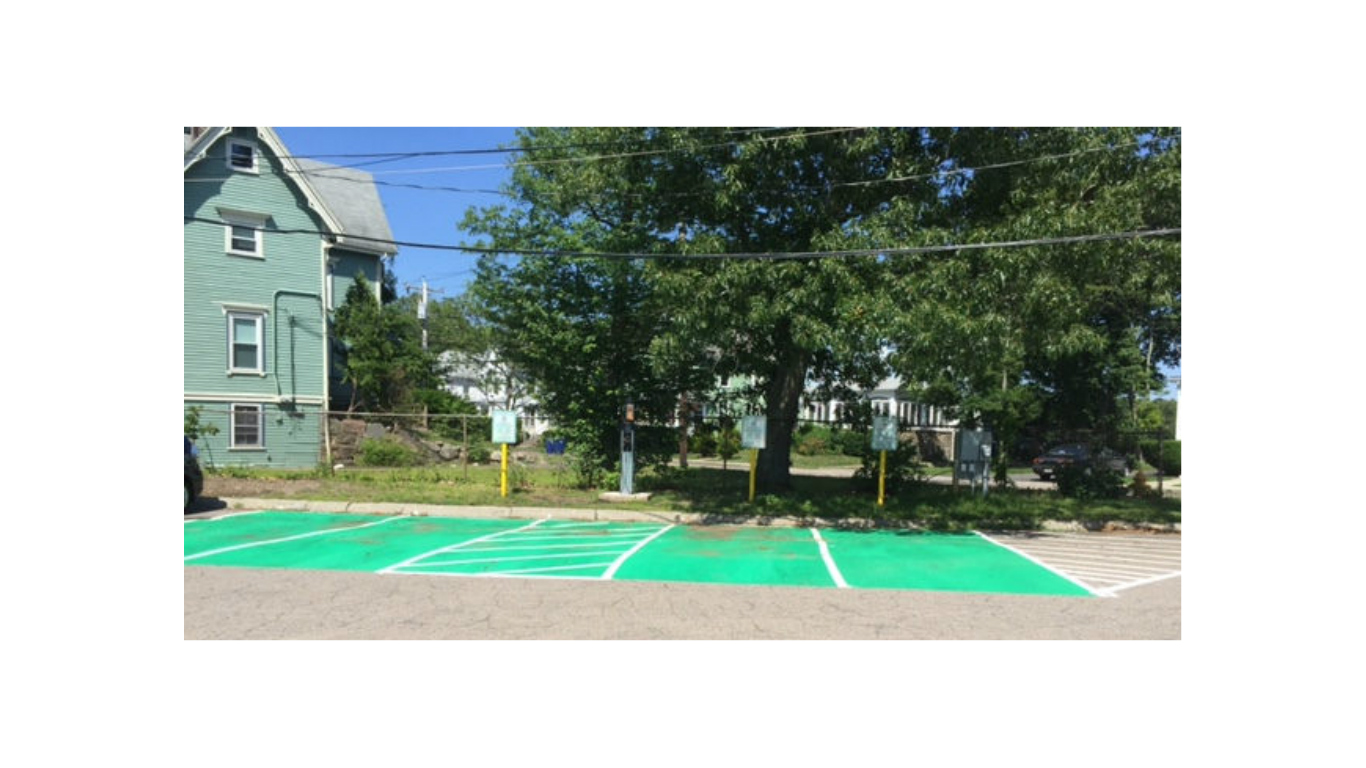
49. Braintree, Massachusetts
> 2017 Population: 37,082
> Municipal status: City
This suburban city in Norfolk County is named in honor of a town with the same name in Essex, England. One theory about the “Brain” part of the name is that it comes from a pre-Celtic word meaning Goddess of the land of Britain — the reason why the Romans named the islands Britannia.
[in-text-ad-2]
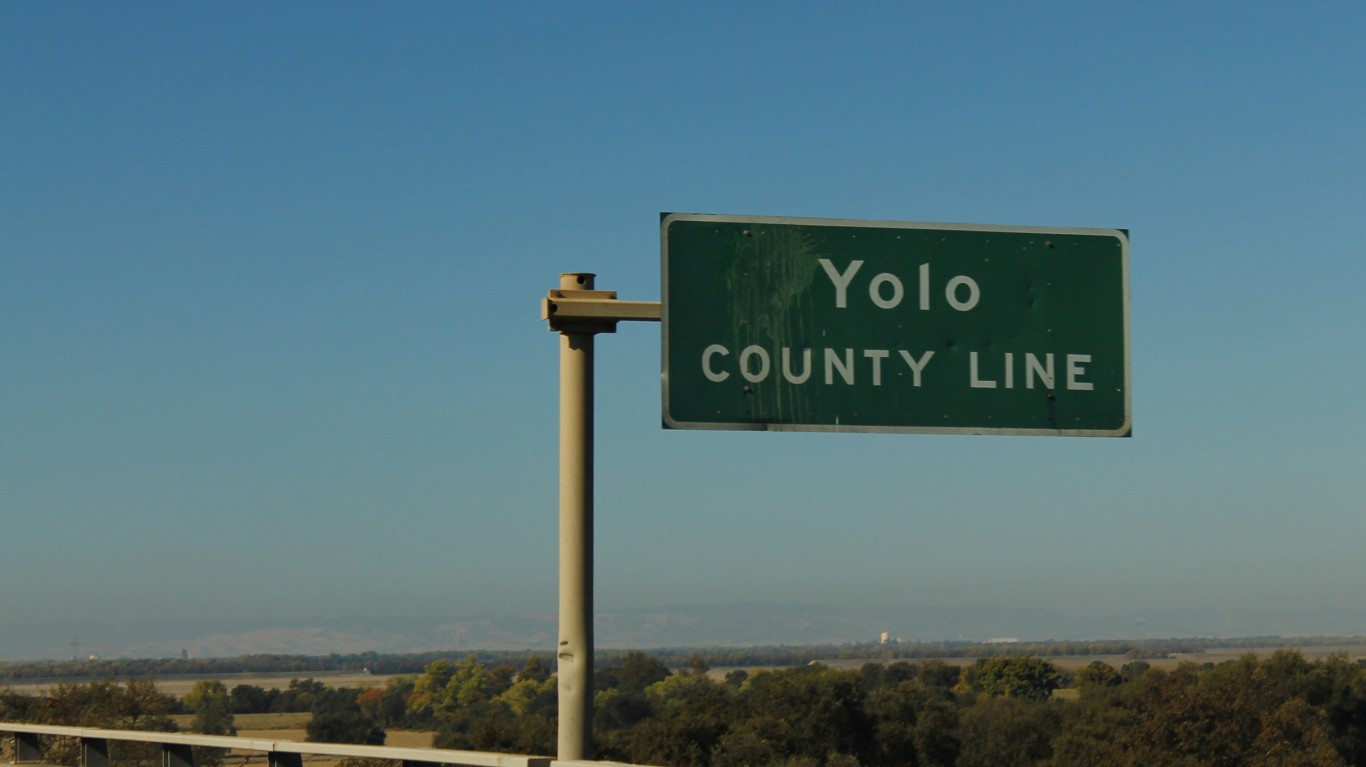
50. Yolo, California
> 2017 Population: 402
> Municipal status: Census-designated place
Many people probably know YOLO to mean “You Only Live Once,” made popular by singer Drake in 2011. But the community’s name goes back much further, deriving from the native Patwin Indian word “yo-loy,” which means a place thick with rushes, or a lot of grassland.
Are You Ahead, or Behind on Retirement?
If you’re one of the over 4 Million Americans set to retire this year, you may want to pay attention. Many people have worked their whole lives preparing to retire without ever knowing the answer to the most important question: am I ahead, or behind on my goals?
Don’t make the same mistake. It’s an easy question to answer. A quick conversation with a financial advisor can help you unpack your savings, spending, and goals for your money. With Zoe Financial’s free matching tool, you can connect with trusted financial advisors in minutes.
Why wait? Click here to get started today!
Thank you for reading! Have some feedback for us?
Contact the 24/7 Wall St. editorial team.
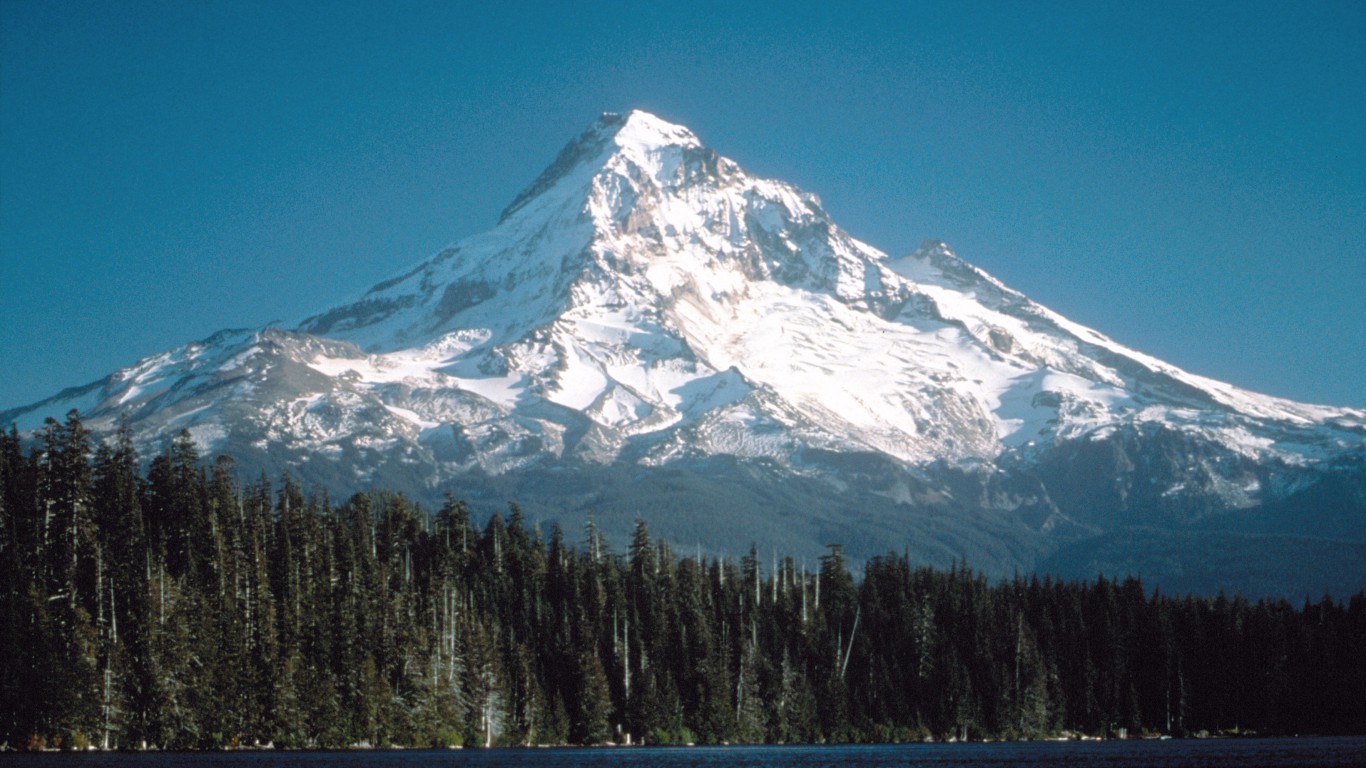 24/7 Wall St.
24/7 Wall St.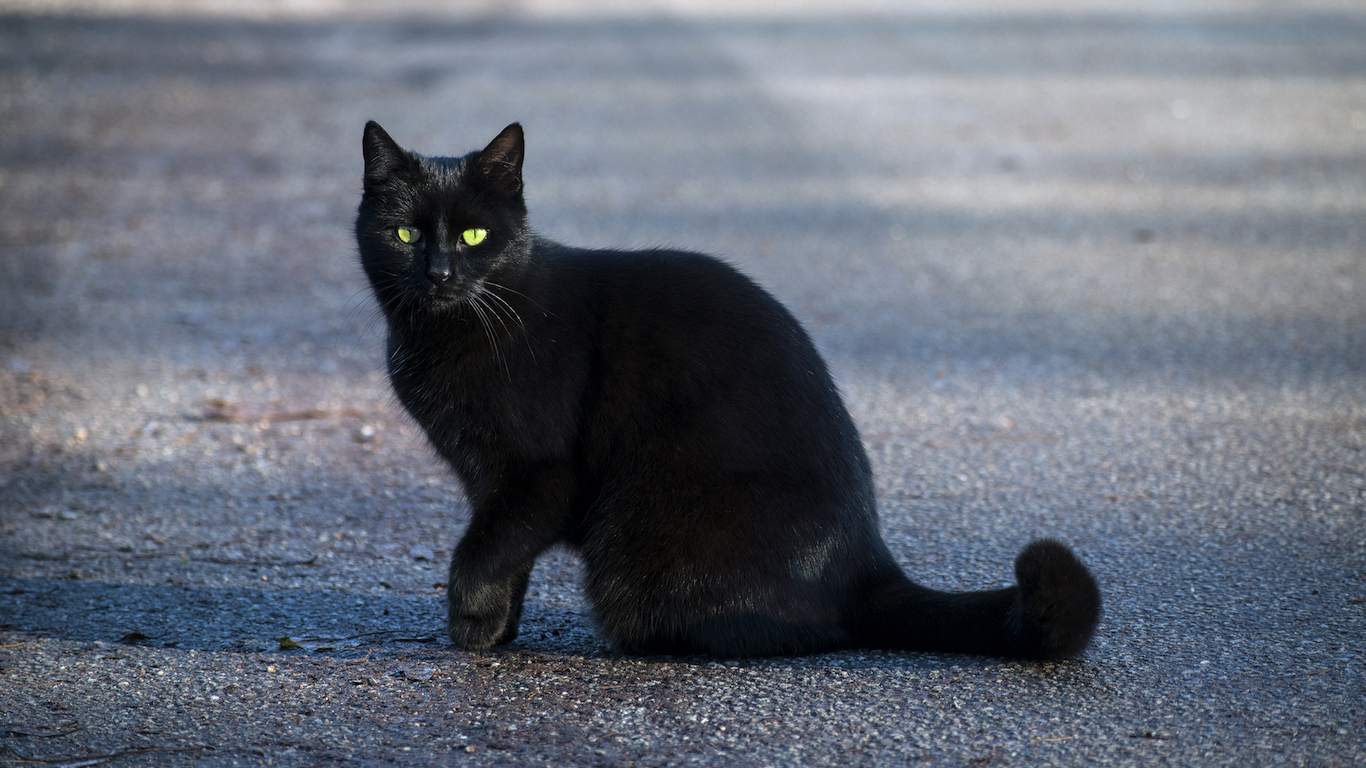 24/7 Wall St.
24/7 Wall St.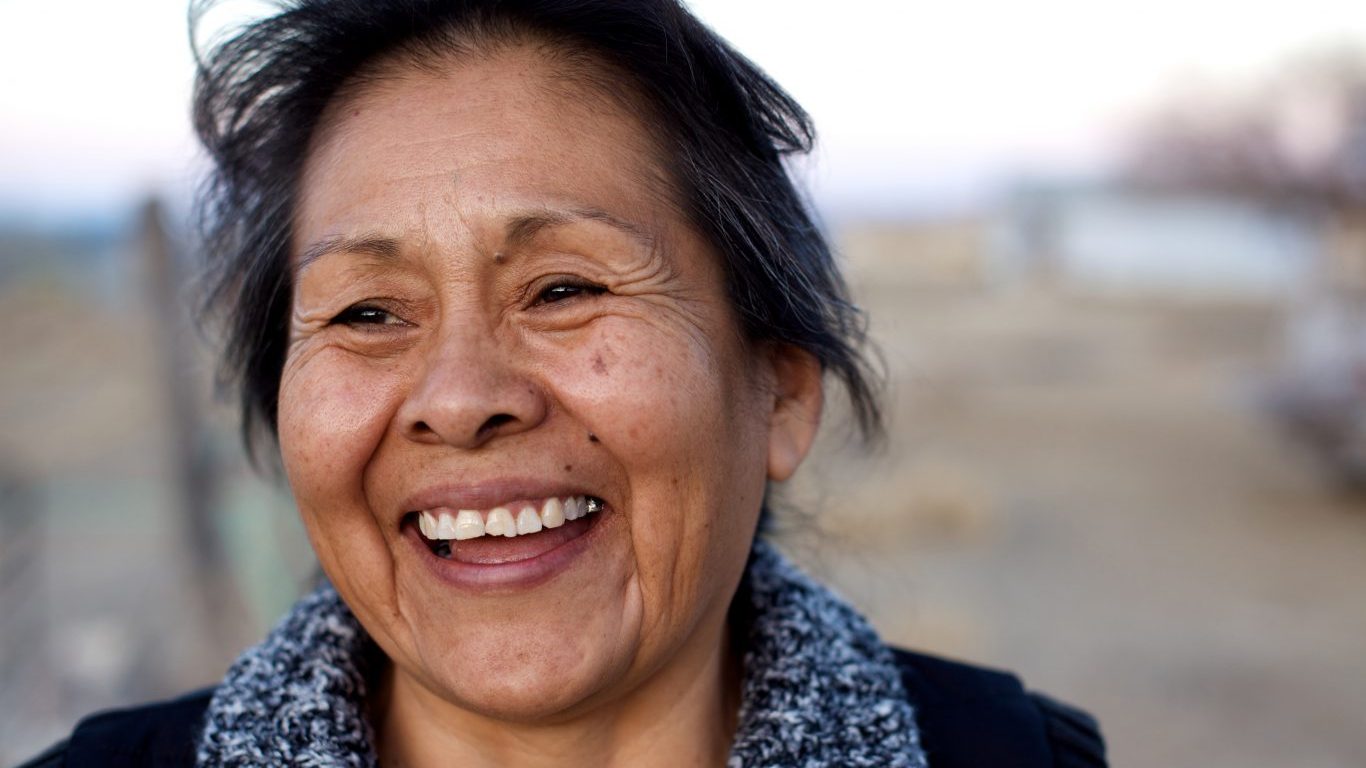 24/7 Wall St.
24/7 Wall St. 24/7 Wall St.
24/7 Wall St.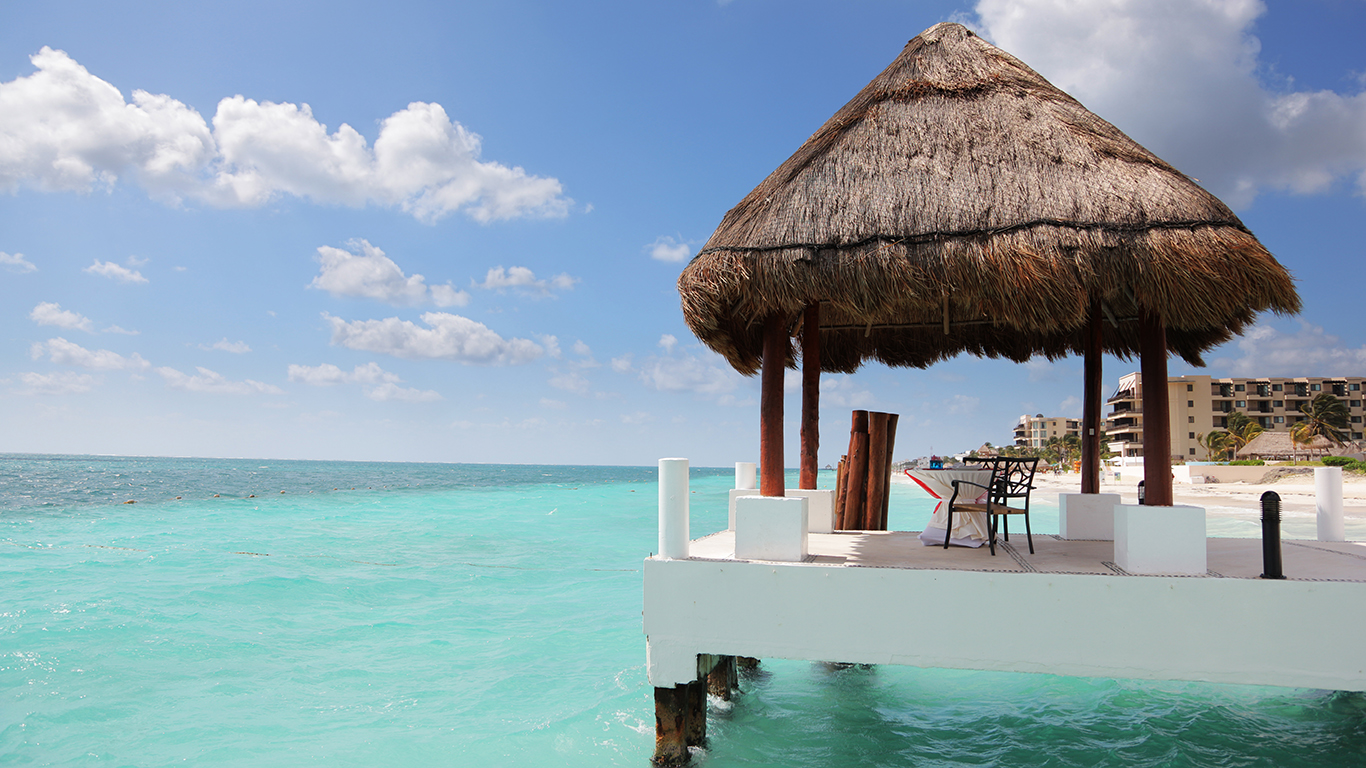 24/7 Wall St.
24/7 Wall St.



